
Showcasing the Best of Off-Beaten Destinations
- Abra Province Tourist Spots
- Baguio City
- Mountain Province
- REGION I-ILOCOS REGION
- REGION II- CAGAYAN VALLEY
- REGION III – CENTRAL LUZON
- REGION IVA-CALABARZON
- REGION IVB – MIMAROPA
- REGION V – BICOL REGION
- REGION VI – WESTERN VISAYAS
- REGION VII – CENTRAL VISAYAS
- REGION VIII – EASTERN VISAYAS
- REGION IX – ZAMBOANGA PENINSULA
- REGION X – NORTHERN MINDANAO
- REGION XI- Davao Region
- REGION XIII-CARAGA
- Region XII-SOCCSKSARGEN
- BARMM – Bangsamoro
- Work with Me
- Blogging Resources
- Travel Musings


20+ Eco-Tourist Spots in Kalinga (UPDATED): Best Places to See
Here is a comprehensive list of tourist spots/attractions in Kalinga province!
Kalinga is both a land of legend and mystery. It depicts stories of struggles, unity, and peace. For centuries, the valiant I-Kalinga defended their land and water from corporate aggression. Their victory against the famous Chico River dam rings hope and inspiration among indigenous peoples (IPs) worldwide.
But there is more to Kalinga. It is also a land of untold beauty and bounty. Its hidden wonders echo in the wonderful songs and dances of its people. Apo Whang-od, the most famous Cordilleran, is a living testimony of that.
To date, Kalinga is making waves in the ecotourism world. Mystic-seekers, hikers/mountaineers, adventurers, cultural advocates, and nature lovers are frequenting Kalinga more and more.
Relevantly, Kalinga is now considered a Tourism Development Area.
Now, here are the top 20 must-see Kalinga province tourist spots .
Explore the Tourist Spots in Kalinga!
1. binasalan falls .
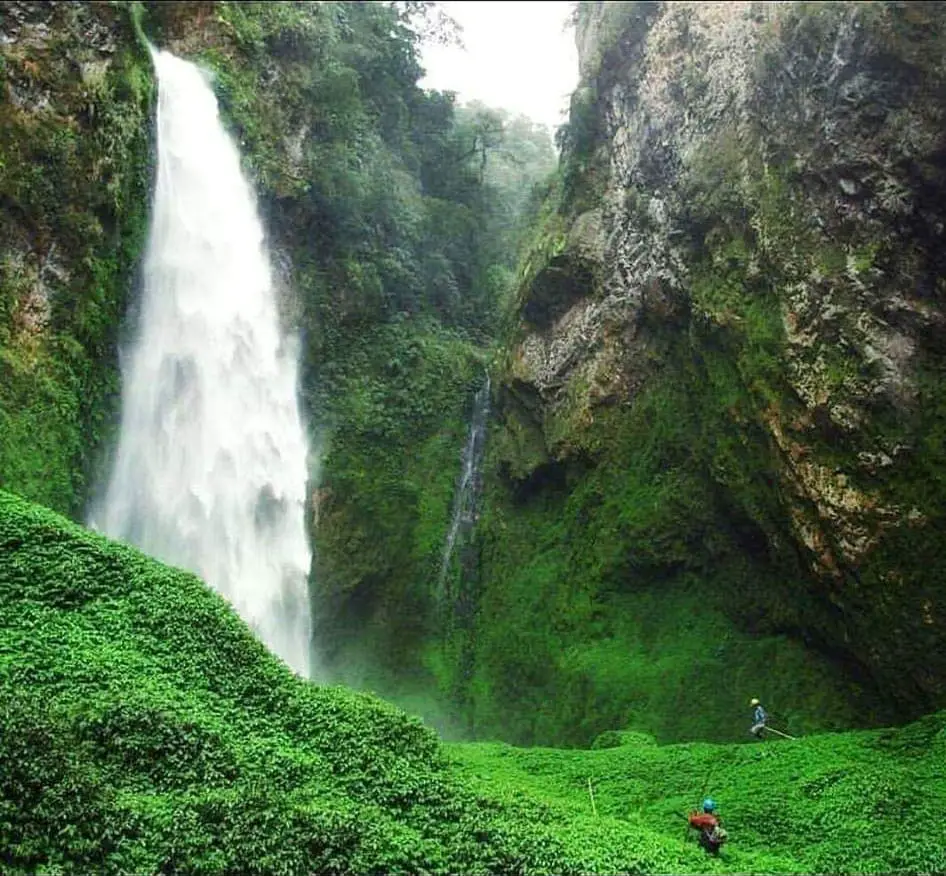
Binalasan Falls is one of the rustic tourist spots in Kalinga province. Its waters emanate from the dense mossy forests of Mt. Binuluan. It cascades for more than 30 meters on a very deep pool.
Swimming in the pool can be quite dangerous due to its strong and churning current.
Summer then would be the best time to visit. Verdant vegetation of shrubs, mosses, and grasses surround its base.
To get here, one needs to hike for at least an hour or more from the road. Literally, you’ll climb over steep trails and jump across boulders before finally catching sight of the falls.
- Location/Jump-Off: Pasil, Kalinga
- Trekking Time: 2-3 hours
- Guide Fee: Donation
- Entrance Fee: None
2. Sulfur Hills
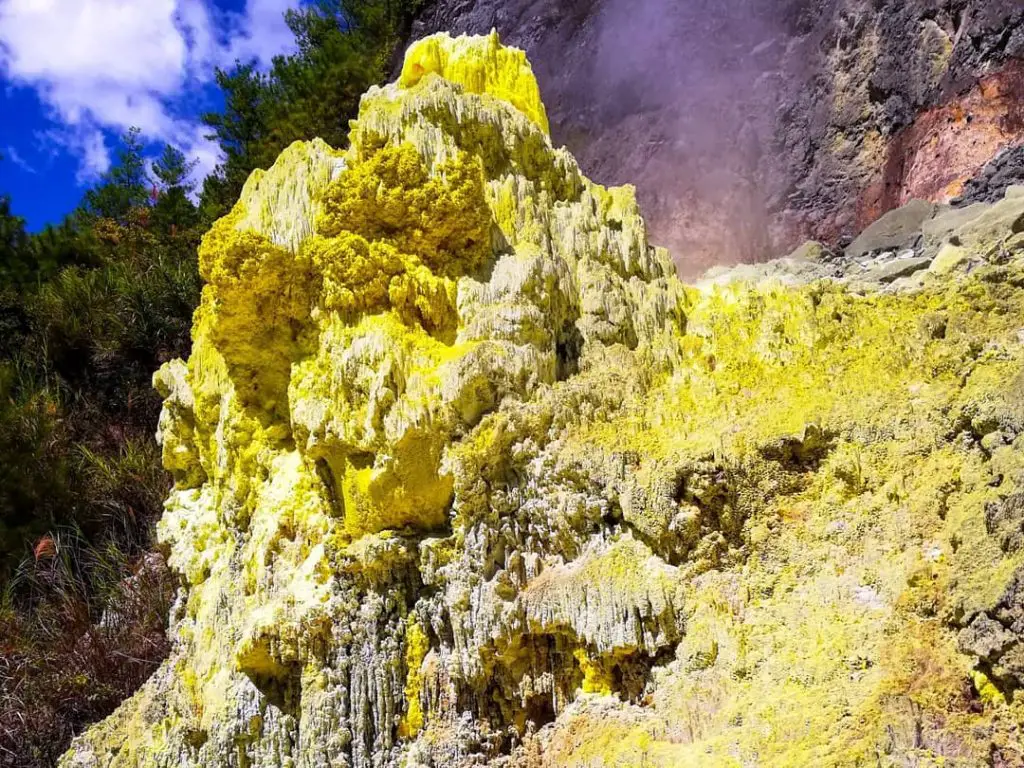
The surreal Sulfur Hills lie on the lower slopes of Mt. Binuluan. To get here, you need to trek on hunter’s trails for hours. You will be passing across pine and mossy forests.
Expect the thrills and challenges frequently encountered when on forested terrains. But the bizarre sight of these sulfur hills would definitely make up the difficulty in getting here.
- Trekking Time: 4-5 hours
3. Mount Binuluan
Mt Binuluan towers over the municipalities of Tinglayan, Pasil, and Lubuagan. It stands prominently for more than 2,329 MASL. Beautiful and dense mossy forests cover its upper slopes.
According to the locals, the mountain erupted a few times during the past century. An interesting feature Mt. Binuluan is the presence of fumarole fields, solfataras and hot springs on its slopes.
Trekking to the mountain presents a real challenge since trails are not yet fully established. In fact, only a few locals and hunters were able to reach its summit and catch sight of its captivating views.
Mt. Binuluan also hosts diverse flora and fauna species such as deer and wild pigs. To date, Mt. Binuluan is one of the least known tourist spots in Kalinga.
- Location/Jump-off: Pasil and Tinglayan, Kalinga
- Trekking Time: 2-3 days
4. Tumuyoc Falls
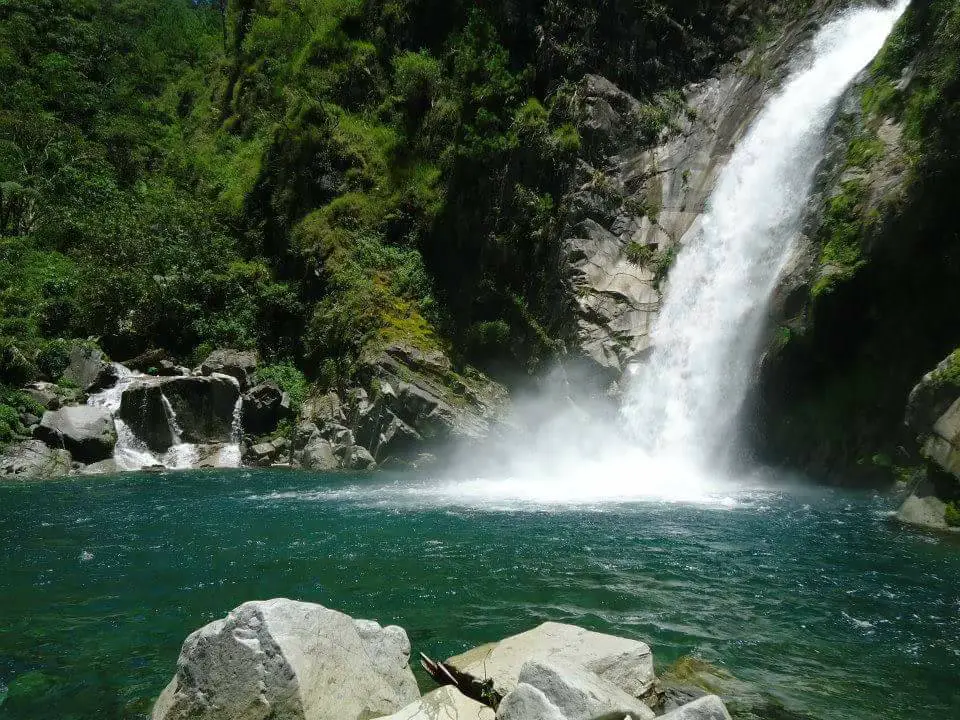
Tumuyoc falls measures around 30 feet high and cascades to a wide and very deep pool. Its waters are icy-cold and crystal-clear.
To get here, one needs to hike for hours from the nearest community. But then again, nature’s surprises will greet you all along.
The pristine waters also host endemic marine species such as small fishes, eels, and crabs. These are part of the common foods of the locals, cooked in indigenous ways.
- Trekking Time: 3-4 hours
5. Laroy Falls

Laroy Falls is considered the highest falls in Kalinga province. It composes of at least 8 different cascades, plunging towards the Pasil River.
They are best viewed along the road during the rainy months. Its waters emanate from pristine mossy forests upstream.
- Trekking time: 30 minutes to 1 hour
6. Buaya Caves

Buaya caves feature various stalactite and stalagmite rock formations. There are beautiful chambers inside, reminiscent of a cathedral’s domes and spires.
To get deeper inside the cave, expect to rappel, climb on rocks, and wade across pools. Yes, there’s a small brook inside. There are also waterfalls.
In some parts of the cave, you would feel like you are in the golden chamber. The caves are interconnected from each other and form a chain covering the whole mountain slope.
Surely, these could be the next big hit after Sagada. But proper management practices need to be developed and strictly implemented.
- Location/Jump-Off: Balbalan, Kalinga
7. Lubo and Mangali Rice Terraces
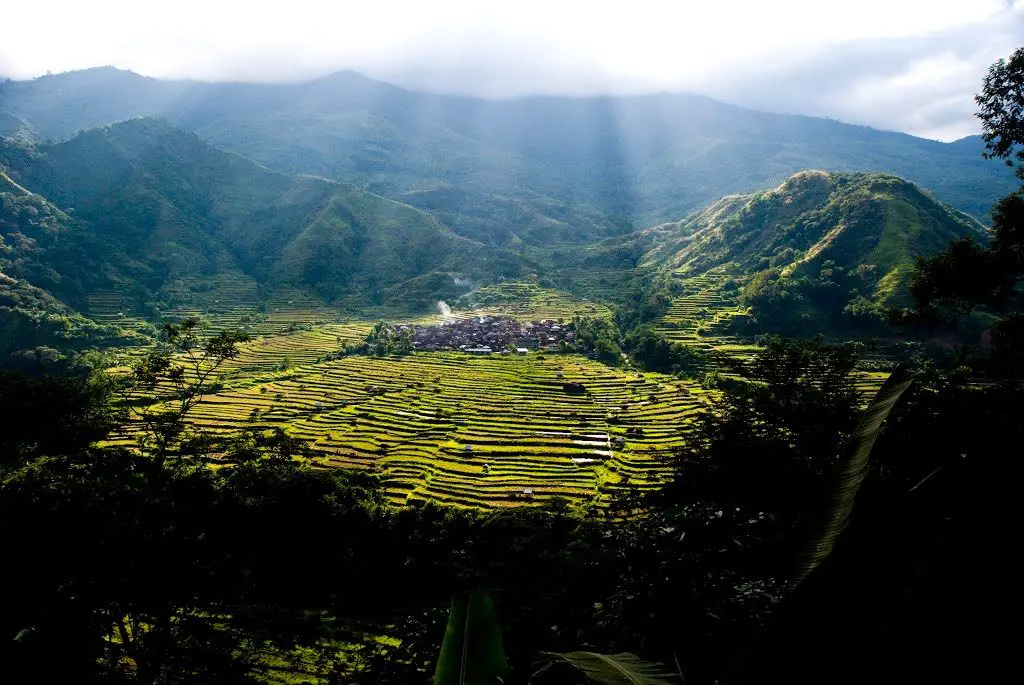
From the road, these terraces look like circular cascades. They surround the village of Lubo. The Tanudan river passes alongside these terraces.
On a personal note, these are among the most picturesque tourist spots in Kalinga.
Towering mountains provide a dramatic background of these terraces. They also supply abundant water supply all year round. Aside from the terraces, the hospitality of the people would definitely leave you feeling blissful.
- Location/Jump-Off: Tanudan, Kalinga
- Trekking Time: Minutes away from the Village
8. Mt. Mating-oy (Sleeping Beauty Mountain)

Also known as the Sleeping Beauty Mountain of Kalinga, Mt. Mating-oy depicts the shape of a lady lying on its back. Legend says that the mountain is the remnant of a woman who waited for her husband to return but in vain.
Dense forests cover the mountains. These feed abundant creeks and brooks as well as cascading waterfalls. To date, Mt. Mating-oy is one of the least explored tourist spots in Kalinga province.
- Location/Jump-off: Tinglayan, Kalinga
- Trekking Time: 5-6 hours to 2 days
9. Palang-ah Falls
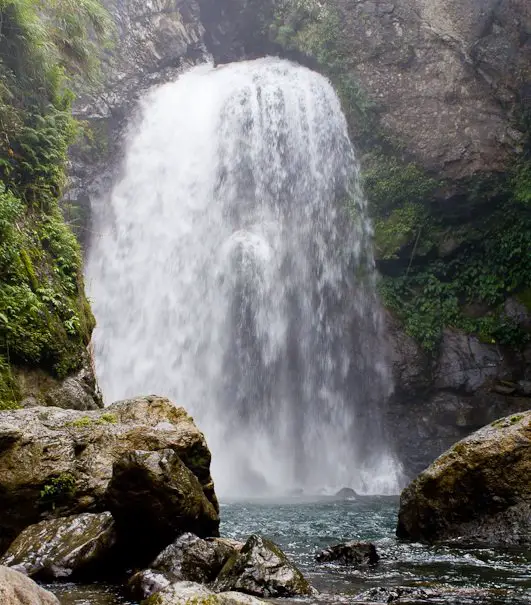
Palang-ah Falls lies adjacent to a ravine in Tulgao, Tinglayan. It is named as such because it resembles the shape of a chair. “Palang-ah” is a local term for chair.
Palang-ah Falls measures around 40 feet high and has carved a very deep pool. When the sun strikes, the falls projects a view of a rainbow. The waters here are icy-cold and crystal-clear, enough to soother and harden muscles.
Just a few meters from the falls is a hot spring. So here, you can experience a mix of a cold and hot bath.
- Location/Jump-Off: Brgy Tulgao, Tinglayan, Kalinga
- Trekking Time: 30 minutes to 1 hour
- Guide Fee: Php 200 per person
10. Balbalasang-Balbalan National Park
The park represents the ecological bounty of Kalinga province and even the whole country. Mossy forests cover most of the park along with patches of pine and montane forests.
So far, 89 species of birds, 23 species of mammals, 13 species of amphibians, 13 species of reptiles and 25 species of earthworms have been documented in the area.
The park also provides a haven to the critically-endangered Rafflesia. Exploring this park would lead you into a rustic and thrilling adventure. Who knows? You might catch sight of the aforesaid wildlife species. Indeed, this will definitely rise as one of the top tourist spots in Kalinga.
11. Fangfangao Lake
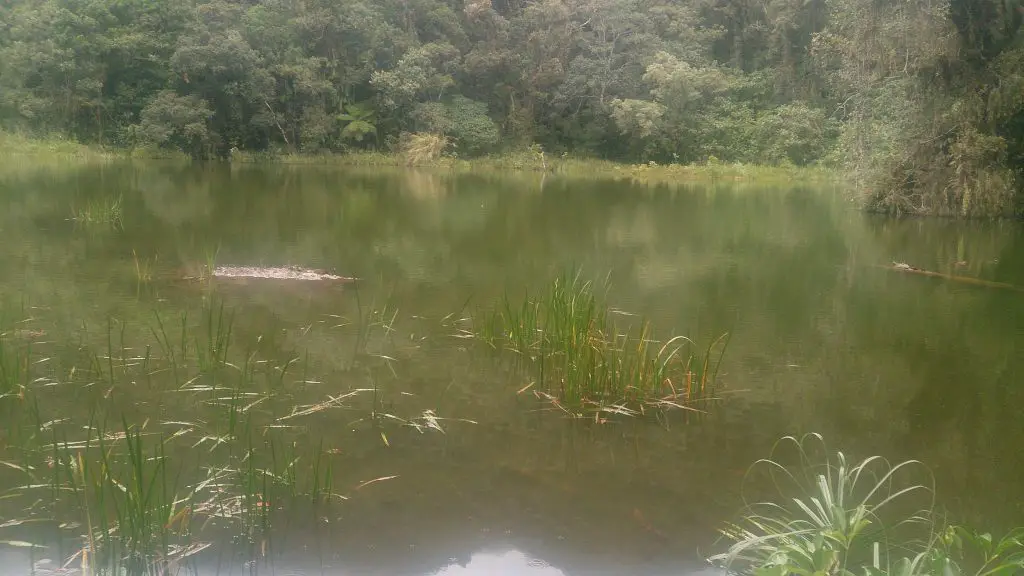
Fangfangao Lake sits on an elevation of around 1,800 to 2000 meters above sea level. It teems with Japanese eels. It was named after a local plant called Charao which abounds in the area.
The lake can be reached via a four-hour hike along the Tabia River. The trek may be long but the trail offers rewarding scenes of the mountains plus the occasional sights of blooming orchids.
12. Saltan River

Saltan river comes from the vast mossy forests of Balbalan. During good sunny conditions, the waters exude an emerald appearance, making it inviting for a swim.
Cavernous boulders and rocks surround the river. These provide a perfect spot for diving or jumping.
The river teems with endemic aquatic species such as fishes and eels. More often than not, there are being served to visitors the traditional way.
Because of its pristine condition, Saltan River is one of the frequented tourist spots in Kalinga especially among the locals.
- Trekking Time: 20-30 minutes
13.Bonnong Lake & Asibanglan Lake
These mountain lakes thrive with eels and other aquatic species. They are a favorite picnic site among the locals. Boating can also be a potential activity here.
- Location/Jump-Off: Pinukpuk, Kalinga
14. Pasil Natural Dam
Pasil Natural Dam lies just below the community of barangay Dangtalan, specifically, sitio Puapo. A massive slope erosion formed this dam-like basin of water. It offers a good spot for boating and picnic during the summer months.
Swimming, however, is discouraged due to possible water contamination because of small-scale mining operations upstream. When one follows the river downstream, there is the towering and multi-tier Laroy Falls.
15. Elephant Hill
Elephant Hill is the site of an archaeological digging where remains of ancient elephants, crocodiles, and rhinoceros were discovered. Ancient man-made tools were also unearthed from this spot.
In fact, the fossils discovered here show that the first inhabitants of the country are more ancient than previously thought.
Elephant Hill is one of the emerging tourist spots in Kalinga.
- Location/Jump-Off: Rizal, Kalinga
16. Sungang Viewpoint
Sungang Viewpoint provides a panoramic view of the mountains and villages of Tinglayan, Tanudan, Tabuk, and Lubuagan. The rice terraces of Tulgao and Dananao including the famous Sleeping Beauty can also be viewed here.
- Location/Jump-Off: Tinglayan, Kalinga
- Trekking Time: Minutes away from the Community
17. Dulag Historical Marker

Dulag Historical Marker was unveiled on April 23, 2017, commemorating the heroic struggle of Macliing Dulag, a tribal elder who pitied the communities of Bontoc and Kalinga against the mega-dam projects of the Marcos regime.
The marker sits on a site overlooking the winding Chico River and the low-lying Bugnay community. It is just along a national highway.
- Location/Jump-Off: Brgy Bugnay, Tinglayan, Kalinga
18. Pungit Falls
Pungit falls is just some 30 minutes of a hike from the village of Bugnay. The falls measures around 20 feet high and has a small and shallow pool. The hot atmosphere of Bugnay makes Pungit Falls a perfect getaway for cooling off.
Pungit Falls is one of the off-beaten tourist spots in Kalinga.
- Trekking Time: 30 minutes
19. Matabor Falls
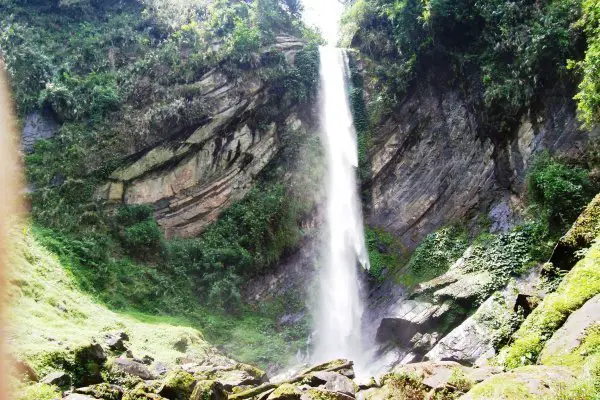
Getting here requires hours of a strenuous hike from the nearest barangay. Expect to trail on dense forests and rappel on ravines before finally catching sight of this majestic beauty.
Leeches are a constant menace, especially during the rainy months. The trail may be long and challenging but it affords one with fascinating views of the forest.
The main falls of Banga-banga cascades on the face of an exposed cliff. It measures around 50 meters high.
20. Guinaang Village
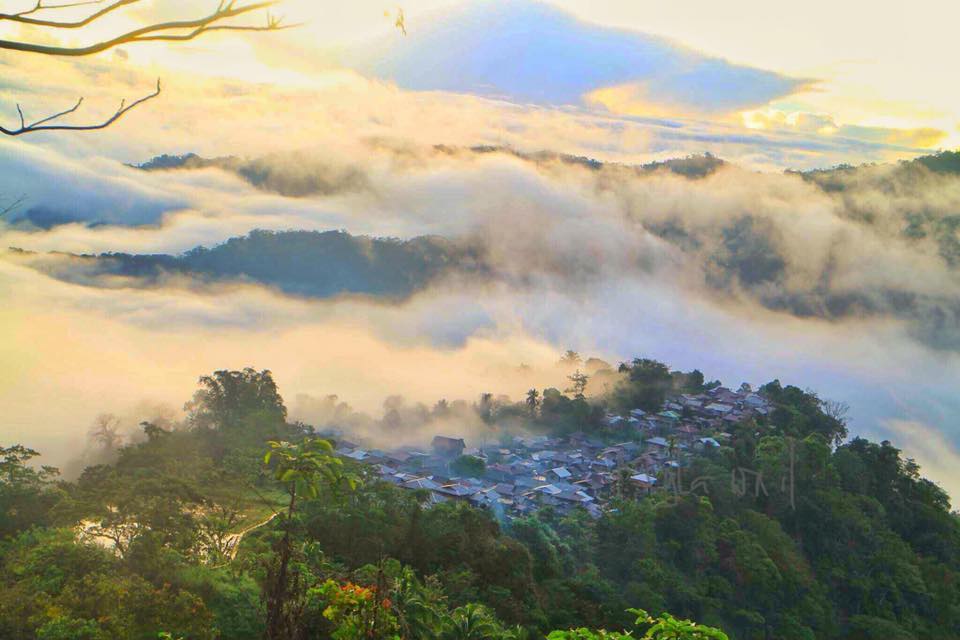
Guinaang Village is one of the historical tourist spots in Kalinga. During the Philippine-American War, it served as Gen. Emilio Aguinaldo’s retreat haven. His stay, however, did not last long. The Americans continued to pursue him until he was finally caught somewhere in Isabela.
Besides being historical, the village offers a rustic life in the hinterlands. The people here are kind and hospitable. Plus, it rewards one with fascinating views of rice terraces and mountains.
How to get to Kalinga Province:
By land : From Manila, you can reach the province of Kalinga by riding the bus in Dangwa and Victory Liner Terminal via Tabuk – the capital city of Kalinga. The travel time is about 10 hours. Buses from Manila usually leave when evening and it arrives morning in the city of Tabuk.
By air : If you want a faster trip, you can travel by air from Manila going to Tuguegarao. When you get there, public vehicles like jeeps going to Tabuk are available in the area. The travel time is about one hour.
Source: Vigattin Tourism
For more Info on Kalinga Tourist Spots
If you need further information that may help in setting up your itinerary to Kalinga tourist spots, do contact the Provincial Tourism Office of Kalinga through:
- Contact Number: 0921 975 1753
- Email: [email protected]
- Messenger: Kalinga Tourism, Philippines
For other relevant queries, simply ask them in the comment section below. You can also message us on our Facebook page namely, Daniel’s Eco-Travels . I will be more than glad and willing to answer them whenever I can:)
Related Articles:
- Top 20 Must-See Tourist Spots in Benguet
- Top 20 Mountain Province Tourists to Visit Now & Best Things to Do
- 20+ Best Ifugao Tourist Spots: Home of the Famous Banaue Rice Terraces
- Apayao: Top 20 Must-See Tourist Spots
- Top 20+ Abra Tourist Spots: Natural & Historical Places to See
Share this:
23 comments.
Wow! Thanks for your efforts to show some places in Kalinga. On item #12 labeled Uguid Subterranean River, the description is accurate; however, the photo is of the Saltan River at Balbalasang.
thank you po for that information:) really appreciate it sir Edward…are uguid river and saltan river different? if yes, perhaps, you may send me a photo of the uguid river? thank you very much po:)
Magkaiba po. I have not a readily available photo of the Uguid underground river, but here is a description of it in the Baguio Midland Courier.
http://baguiomidlandcourier.com.ph/environment.asp?mode=%20archives/2015/august/8-30-2015/env6-Cave-in-Balbalan-is-RPs-8th-deepest-cave.txt
Thank you so much for promoting our hometown..There are a lot of scenic destinations which haven’t yet reached by tourists due to the difficulties on the trails but hopefully will be given attention by local gov’t too.
welcome po:)
They Pasl natural dam is within the area barangay dangtalan specifically Sitio Puapo
thanks po for the information…i have updated the article with your suggestion…perhaps, you can recommend additional information i can add plus a good photo of it…thnks po:)
The pic use depicting banga-banga falls is actually matabor falls in Tanudan
thanks po nats for the info..i already integrated your suggestion in the article…i actually lacked data about the falls…maybe you can suggest additional information i may add and a good photo also..thank you very much:)
It’s not mating falks.. It’s called laroy falls.. And it’s not padcharao lake, it’s fangfangao lake
Hi. Im interested to visit Number 1 to 5. Is there in anyway I could request quote that includes fare and accommodation? I will be travelling from Tabuk, Kalinga. You may include food as well. You may send it to [email protected] . Just want to check if ok to visit the 5 places in 2 to 4 days?
Informative article sir! May we ask the direction going to guinaang village ? We are planning to go there sir. More power sir! God Bless!
Hello – Interested in visiting Binasalan Falls (Pasil), Kalinga. Can you provide some directions on how to get there? Closest Barangay, jump off point etc?
Thanks for promoting our hometown. Especially yung 1 to 5. Godbless po
Fantastic places to visit in Kalinga. Such a joy to see this post. What amazing places, fully covered with nature. I will definitely be going to visit these beautiful places in the future. I love nature and I just love to explore more places like these. Thank you so much for sharing this great post. Really looking forward to another of your blog.
thank you very much po for such heartfelt remarks…your inspire me…
thank you very much po for such heartfelt remarks…you inspire me…
does anybody know if Kalinga Day, celebrated with street dancing in Tabuk, is on Pebrero 14th? It seems difficult to find that information…
Hi, I’m from Costa Rica, I’m a volcanologist. I am interested in the topic of sulfur. Do you by any chance know the temperature of those fumaroles? have you seen molten sulfur? Thanks a lot
Raul Mora-Amador, from Costa Rica Central America.
Hi Raul, sorry for replying. I know the question is not for me but I saw sulfur when I was a teenager, Im now 45, and touched it with my hands. I dont know the temperature but it’s not hot or cold in y palm. Hope that helps, lol.
there are molten sulfur in that place
agyamanak apo! – Tresi from Tabuk, but roots from Uma Lubuagan
I want to visit no. 1,2,4,9,12…where can i get a tour guide?
Leave a Comment Cancel
Your email address will not be published. Required fields are marked *
Email Address *
Save my name, email, and website in this browser for the next time I comment.
Hi there fellow traveler! My name is Daniel although you can call me Kumafor. That's my indigenous name. I grew on a remote village called Lias in Barlig, Mountain Province.
Check Out our Latest Posts
- Top 18 Romblon Tourist Spots including natural attractions
- Top 14 Siquijor Tourist Spots: Island of Enchantment
- 19 Top Cebu Tourist Spots and Best Things to Do
- Top 20 Siargao Tourist Spots: Home of Waves and Beaches
- Best 22 Bohol Tourist Spots including the Things to do
Uncovering the Top 20 Kalinga Tourist Spots
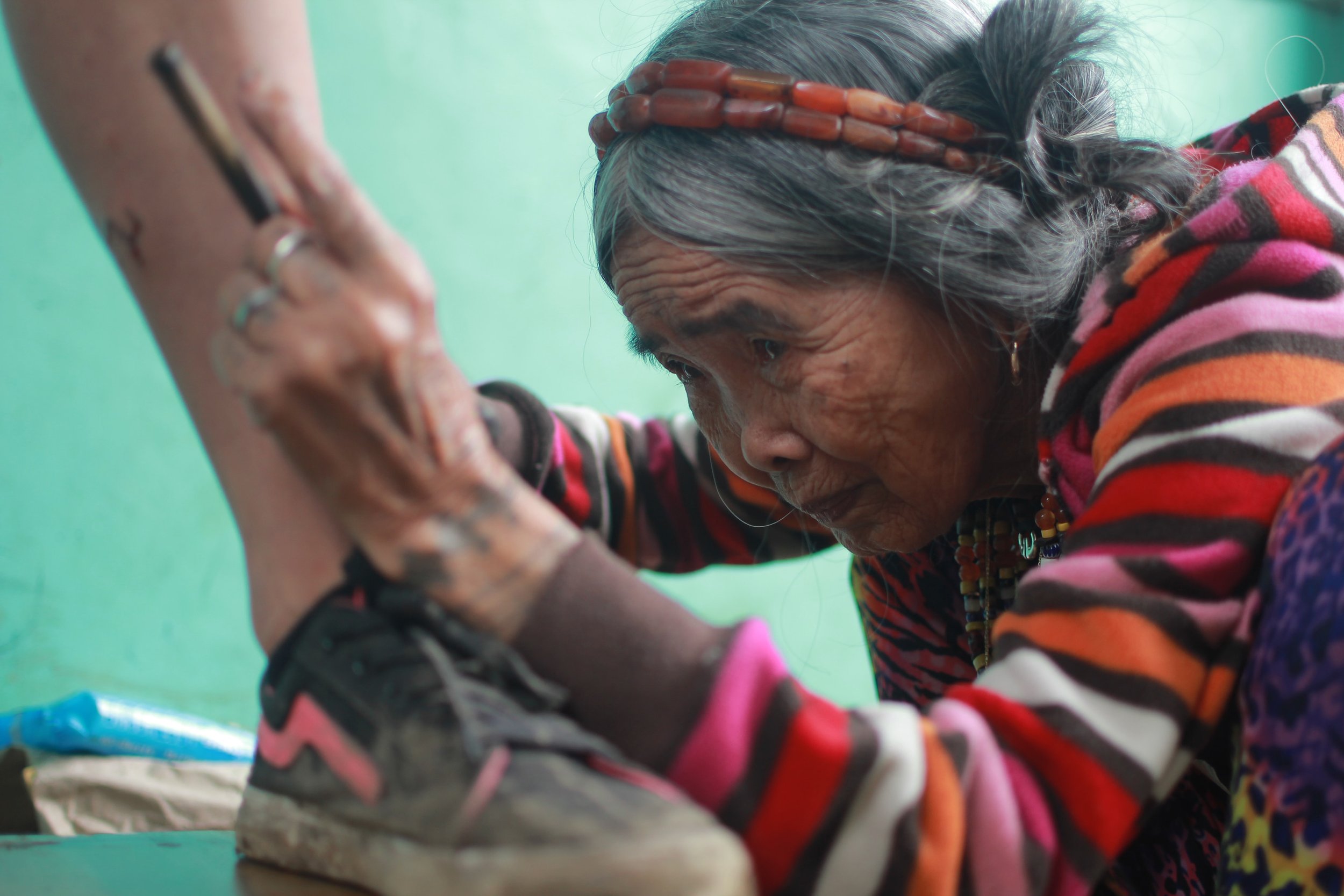
Discover the breathtaking beauty and rich cultural heritage of Kalinga tourist spots. This destinations is a landlocked province in the Cordillera Administrative Region of the Philippines. Known for its rugged landscapes, ancient traditions, and warm hospitality, Kalinga is an ideal destination for those seeking an authentic and off-the-beaten-path experience.
Here are the top 20 Kalinga tourist attractions and activities that you should consider visiting.
1. chico river.
Embark on a thrilling white-water rafting adventure along the Chico River, one of the longest and most challenging rivers in the country. With its stunning scenery, thrilling rapids, and expert guides, this is an adrenaline-pumping experience you won't forget.
2. Tinglayan Rice Terraces
Witness the spectacular Tinglayan Rice Terraces, centuries-old agricultural marvels carved into the mountainsides. These UNESCO World Heritage sites are a testament to the ingenuity and perseverance of the Kalinga people.
3. Buscalan Village
Visit Buscalan Village, the home of the legendary Kalinga tattoo artist, Apo Whang-Od. Experience the ancient art of hand-tapped tattoos and immerse yourself in the village's unique culture and traditions. Because of the influence of Apo Whang-od and the increasing flow of tourists who take huge physical effort to reach the site to get tattooed, other members of the community are now able to also put traditional tattoos to the visitors.
4. Kalinga Capitol Tourism Complex
Explore the Kalinga Capitol Tourism Complex in Tabuk City, a one-stop destination for learning about the province's history, culture, and natural wonders. The complex features a museum, souvenir shops, and a beautifully landscaped park.
5. Mount Binuluan
Conquer Mount Binuluan, an active volcano that offers challenging treks and awe-inspiring views. The summit provides a panoramic view of Kalinga's verdant landscapes, making it a rewarding destination for experienced hikers.
6. Pasil River
Experience the serenity of the Pasil River, a vital resource for the province that supports agriculture, fishing, and transportation. The river's crystal-clear waters and lush surroundings make it perfect for relaxation and reflection.
7. Ag-agama Water Park
Cool off at the Ag-agama Water Park in Pasil, a family-friendly destination that offers swimming pools, slides, and picnic areas. The park is surrounded by lush greenery, providing a refreshing escape from the heat.
8. Sleeping Beauty Mountain
Marvel at the unique silhouette of Sleeping Beauty Mountain in Tinglayan, named for its resemblance to a slumbering woman. The mountain offers picturesque views, nature trails, and bird-watching opportunities.
9. Awichon Kalinga Cultural Village
Visit this model of Kalinga village in Buscalan that has traditional houses that people can sleep in. Located on top of a mountain and surrounded by lush forests and commanding views of the nearby Cordillera peaks, one can have a good quality cultural immersion experience in this village that was built by a national artist, Alonzo Saclag.
10. Tabuk City Matagoan Festival
Celebrate the vibrant Tabuk City Matagoan Festival, an annual event that showcases Kalinga's rich cultural heritage, traditional dances, and delectable cuisine. The festival features street dancing, parades, and various competitions.
11. Binaratan Eco-Park
Discover the natural wonders of Binaratan Eco-Park in Rizal, a lush forest reserve that offers hiking trails, bird-watching opportunities, and picturesque views. The park is also home to several waterfalls, perfect for a refreshing dip.
12. Saint William's Cathedral
Admire the stunning architecture of Saint William's Cathedral in Tabuk City, a significant religious site that serves as the spiritual center of the Kalinga community. The cathedral's beautiful stained-glass windows and intricate wood carvings are a must-see.
13. Palan-ah Falls
Unwind at the enchanting Palan-ah Falls in Tabuk City, a hidden gem surrounded by lush greenery. The multi-tiered waterfall offers refreshing pools, ideal for swimming and picnicking with friends and family.
14. Mabilong Weaver's Village
Visit Mabilong Weaver's Village in Lubuagan, where you can witness the art of traditional Kalinga weaving. Learn about the techniques and materials used in creating beautiful, handwoven textiles that are an integral part of the region's cultural heritage.
15. Laya Adventure Park
Experience the thrill of Laya Adventure Park in Balbalan, a must-visit destination for adrenaline junkies. The park offers zip-lining, wall climbing, and rappelling activities amidst breathtaking mountain landscapes.
16. Lubuagan Town Center
Explore the charming Lubuagan Town Center, where you can stroll through historic streets, visit local markets, and savor traditional Kalinga cuisine. The town is also known for its vibrant festivals and cultural events.
17. Balbalasang-Balbalan National Park
Venture into the pristine wilderness of Balbalasang-Balbalan National Park, a protected area that is home to diverse flora and fauna, including several endangered species. The park offers trekking, bird-watching, and camping opportunities for nature enthusiasts.
18. Tabuk City Night Market
Experience the lively atmosphere of the Tabuk City Night Market, where you can shop for souvenirs, sample local street food, and mingle with the friendly locals. The market is open daily and offers a wide variety of goods and delicacies.
19. Mount Binaratan
Trek to the summit of Mount Binaratan in Rizal, a moderately challenging hike that rewards you with panoramic views of Kalinga's captivating landscapes. The mountain is also popular among birdwatchers and nature photographers.
20. Kalinga Cultural Immersion
Immerse yourself in Kalinga's rich cultural heritage by participating in a cultural immersion program. Learn about the province's customs, traditions, and history as you interact with local communities and experience their unique way of life.
Frequently Asked Questions about Traveling in Kalinga
1. What is the best time to visit Kalinga?
The best time to visit Kalinga is during the dry season, from November to May, when outdoor activities and sightseeing are more enjoyable. However, always check the weather forecast before planning your trip.
2. How do I get to Kalinga?
Kalinga is accessible from Metro Manila by car or public transportation. Numerous buses ply the route from Manila to Tabuk City, the capital of Kalinga.
3. Are there accommodations available in Kalinga?
Yes, Kalinga offers a range of accommodations, from budget-friendly hostels to comfortable hotels and guesthouses.
4. What local dishes should I try in Kalinga?
Some local dishes to try in Kalinga include "pinikpikan" (grilled chicken), "etag" (smoked pork), and "inanchila" (rice cake). Be sure to taste the province's famous "Kalinga coffee."
5. What safety precautions should I take when exploring Kalinga's natural attractions?
Always prioritize safety when exploring natural attractions. Stay on designated trails, wear appropriate footwear, bring water and sun protection, and heed local guides' advice.
Experience the unparalleled beauty and rich cultural heritage of Kalinga tourist spots. They are like hidden gems that are discovered by tenacious travelers to the Cordillera Administrative Region. Create lasting memories as you explore its top 20 (and more!) tourist attractions and activities.
mytourguide.ph
Amazing Tourist Spots in Kalinga Province
The Kalinga region boasts a captivating culture that is nothing short of extraordinary. It is renowned for its indigenous communities, awe-inspiring natural beauty, and remarkable past that has left an indelible mark on the region. If you’re looking for an adventure that is both thrilling and enriching, exploring the Kalinga region should be on your bucket list.
ABOUT KALINGA PHILIPPINES
Kalinga is a landlocked province in the Cordillera Region’s northernmost region. It is bounded to the north by Cagayan and Apayao , to the south by Mt. Province, and the west by Abra . The provinces of Cagayan and Isabela are located to the east. Tabuk is the capital town.
The name of the province comes from the Ibanag and Gaddang noun “kalinga,” which means “enemy,” “fighter,” or “headtaker.”
Music, dance, and artisan work are among Kalinga’s rich cultural heritage. They continue to enforce “bodong,” or peace pacts, within the sub-tribes to resolve tribal conflicts. Scholars and enthusiasts from all over the world are flocking to the province to learn the ancient tattooing technique known as “batok,” or hand-tapped tattooing.

THE KALINGA TRIBE
The Kalinga people are an indigenous ethnic group whose ancestral domain is the Cordillera Mountain Range in the northern Philippines . They are mostly found in the province of Kalinga. Some of them, however, have already moved to Mountain Province , Apayao , Cagayan , and Abra .
LANGUAGES IN KALINGA
Kalinga is a dialect continuum spoken in the Philippines by the Kalinga people alongside Ilocano.
list of the most beautiful tourist spots in Kalinga Philippines
- Aguinaldo Hill
- Asibanglan Lakes
- Balbalasang – Balbalan National Park
- Binasalan Falls
- Bonnong Lakes
- Buaya Caves
- Cadamayan Falls
- Chico River
- Elephant Hill
- Guinaang Village
- Gulag Historical Marker
- Laroy Falls
- Lubo and Mangali Rice Terraces
- Matabor Falls
- Mini Museum of Kalinga
- Mt. Binaratan
- Mt. Binulungan
- Mt. Mating – oy
- Padcharao Lake
- Palang – ah Falls
- Pasil Natural Dam
- Pungit Falls
- Rice Terraces of Dananao
- Saltan River
- St. Willam’s Cathedral
- Sulfur Hills
- Sungang View Point
- Tinglayan Rice Terraces
- Tiwod Spring
- Tongango Caves
- Tuga Catholic Church
- Tumaniw Falls
- Tumuyoc Falls
- Uguid – Maling Subterranean River
BEST THINGS TO DO IN KALINGA
- Enjoy the hike while taking in the stunning scenery of Buscalan.
- Explore the Balbalasang-Balbalan National Park and other attractions in Balbalan.
- Investigate the Subterranean River of Uguid-Maling.
- Get a tattoo from Whang-od in Buscalan.
- Swim at Matabor Falls, Palan-ah Falls, Pasil Dam, and Kalinga Hot Springs.
- Discover the hand-tapped tattooing tradition.
- Make a quick stop in Bontoc and go for a walk.
MUST TRY FOODS IN KALINGA
- Binungor A traditional Filipino dish made from bamboo shoots, tenga ng daga mushrooms, and delicate rice field snails.
- Chilokchok Made from indigenous onion leaves, chili, and sesame seeds.
- Inanchila A rice cake with a coconut topping.
- Inihaw na Baboy Ramo
- Kalinga Coffee
- Unoy rice An upland red rice.
- Ryan & Sons Winery
- Zinagan A Dinuguan-style dish in which intestines and other pork innards are fried until crispy, similar to chicharon, before being sautéed with garlic, onions, ginger, and pork blood; best served with sinursur, pinaltit, and sagket.
WHO IS APO WHANG-OD
Whang-od is the last mambabatok or Kalinga tattooist from the Butbut tribe of Buscalan, Kalinga. She has been tattooing for the past 80 years, including indigenous tribe head hunters at the start of her long career.
THE KALINGA TATTOO
Tattoos symbolized courage, bravery, and valor for Kalinga men. Following a successful headhunt, warriors were given distinct designs to serve as a badge of honor they will wear for the rest of their lives. Kalinga women, on the other hand, adorned their bodies with tattoos to enhance their beauty and attract potential partners.
DISTANCE OF KALINGA TO BAGUIO
Baguio and Kalinga are 142 kilometers apart. The driving distance is 250.2 kilometers.
HOW TO GET TO KALINGA
Take a bus from Baguio City to Bontoc, Mountain Province . Then, from Bontoc municipality, take a jeep or bus to Tabuk, Kalinga, and get off at Bugnay village.
HOW TO GET TO APO WHANG-OG IN KALINGA FROM BAGUIO
Take a bus to Bontoc from the Dangwa Terminal in Baguio – 8 hours. From Bontoc, take a jeepney to the Buscalan Village drop-off point – 2 hours.
INTERNET IN BUSCALAN
One of the best features of Buscalan is that there is no internet connection, allowing you to disconnect from the stress of a digitally busy lifestyle.
TIPS WHEN TRAVELLING TO APO-WHANG-OD IN BUSCALAN
- Bring your own food and water.
- If you want to get a tattoo, plan on spending between 300 and 1000 pesos.
- Bring some extra cash as there are no ATMs in the area.
- Apo Whang-Od is popular so expect a lot of people.
THE BEST TIME TO VISIT KALINGA
The province is best visited during the dry season, which lasts from December to May.
FESTIVALS IN KALINGA
- OLLALION FESTIVAL The festival celebrates the Kalinga culture through its sports, crafts, and indigenous food. It is a wonderful expression of the Kalingas’ heroic exploits, sentiment, thrills, triumphs, and sorrows, as well as their way of life from birth to death. Location: Tabuk, Kalinga Month: February
Share this:
- Click to share on Facebook (Opens in new window)
- Click to share on X (Opens in new window)
- Click to email a link to a friend (Opens in new window)
- Click to share on Telegram (Opens in new window)
- Click to share on WhatsApp (Opens in new window)
KALINGA TRAVEL GUIDE: Things to do, How to Get There + More
Exploring the hidden gem of kalinga: an insider’s travel guide.
- share
- Share on Facebook
- Share on Twitter
Your Ultimate Travel Guide to Kalinga Province
Table of Contents
Kalinga, a province in the Cordillera Administrative Region of the Philippines, is a hidden gem waiting to be explored. Known for its rich culture and breathtaking scenery, Kalinga has become a popular destination for travelers seeking an off-the-beaten-path experience. The province is home to various indigenous communities, each with its own unique customs and traditions that have been passed down for generations.

One of the main draws of Kalinga is its natural wonders. The province boasts stunning rice terraces, waterfalls, and rivers, all surrounded by lush greenery. Visitors can take a dip in the refreshing waters of Binalasan Falls or hike to the top of Mt. Kupapey for a panoramic view of the surrounding landscape. Kalinga is also home to the Chico River, which is a popular spot for white water rafting and kayaking.
Aside from its natural beauty, Kalinga is also known for its traditional tattoo artistry. The province is home to the Kalinga people, who have been practicing the art of tattooing for centuries. The tattoos, which are done using a traditional hand-tapping method, are not only a form of art but also a symbol of the wearer’s identity and status within the community. Visitors can learn more about this ancient practice by visiting the village of Buscalan, where they can meet the legendary tattoo artist Whang-Od and get inked themselves.

Exploring Kalinga
Kalinga province is a perfect destination for travelers seeking adventure and nature. Kalinga offers a wide range of activities that can satisfy every traveler’s thirst for exploration.
One of the best ways to explore Kalinga is through a road trip. The province is known for its scenic routes, which offer breathtaking views of the mountains, rivers, and rice terraces. Travelers can rent a car or a motorcycle and drive around the province at their own pace.

Kalinga is also home to several indigenous communities, which have preserved their traditions and culture for centuries. Travelers can immerse themselves in the local culture by visiting the villages and interacting with the locals. They can witness traditional dances, music, and rituals, and even get a chance to try the local cuisine.
Nature lovers will also find Kalinga to be a paradise. The province boasts several natural attractions, including waterfalls, rivers, and hot springs. Some of the popular tourist spots include Binalasan Falls, Balbalasang-Balbalan National Park, and Lubo Rice Terraces. Travelers can go trekking, swimming, or simply enjoy the natural beauty of the surroundings.
Historical Significance
Kalinga is a province known for its rich culture and history, particularly the Kalinga people, who are one of the indigenous groups in the region. The Kalinga people have a long and fascinating history, dating back more than 2,000 years.

One of the most famous aspects of Kalinga culture is the hand-tapped tattoo, also known as batok. This traditional tattooing method has been passed down through generations of Kalinga people and is still practiced today. The most famous practitioner of this art form is Apo Whang-Od, who has gained international recognition for her skills and has become a cultural icon.
Today, Kalinga is a popular destination for travelers who are interested in history and culture. Visitors can learn about the Kalinga people and their traditions, visit the famous hand-tapped tattoo artists, and explore the beautiful Cordillera Mountains. Kalinga’s historical significance and rich cultural heritage make it a fascinating destination for anyone who wants to learn more about the Philippines and its people.
Traveling to Kalinga
Here are some tips for traveling to Kalinga.
Getting to Kalinga
The most common way to get to Kalinga is by land travel. From Manila, there are several bus companies that offer trips to Tabuk City, the capital of Kalinga. The travel time is around 12 hours, and the fare ranges from Php 700 to Php 1,000. Another option is to take a bus to Baguio City and then transfer to another bus going to Tabuk City.
Manila to Tabuk City
- Victory Liner – Kamias 7:00 PM / 8:30 PM / (2 Trips Daily) Sampaloc Terminal – 7:00 PM / 9:45 PM (3 Trips Daily)
- Dangwa Bus – Morning and Afternoon (2 Trips Daily)
- ES Transport – AM and PM (2 Trips Daily)
Baguio City to Tabuk City
- Dangwa Bus – AM and PM (2 Trips Daily)
- GL/Lizardo Trans – AM and PM (2 Trips Daily)
- Northlandia Vans
Tuguegarao City to Tabuk City
6:00 AM to 5:00 PM Daily Trips NORTHLANDIA Vans KALTRANSDECO Vans
For those who prefer to travel by air, the nearest airport to Kalinga is the Tuguegarao Airport in Cagayan Province. From the airport, you can take a bus or van to Tabuk City. Another option is to fly to the Cauayan Airport in Isabela Province, around 2 hours away from Tabuk City.
- Cebu Pacific (Daily Morning and Afternoon Flight)
- Philippine Airlines (Clark-Tuguegarao-Clark – 4x a week)
Getting Around Kalinga
Once you arrive in Kalinga, the best way to get around is by hiring a private vehicle or taking a tricycle. There are also jeepneys and buses that travel between the different towns and municipalities, but they can be quite crowded and uncomfortable.
Itinerary Suggestions
Kalinga has a lot to offer, and it can be overwhelming to plan your itinerary. Here are some suggestions:
- Visit the famous Buscalan Village in Tinglayan, where you can see the traditional tattoo art of the Kalinga people and experience their unique way of life.
- Explore the stunning landscapes of Tinglayan, including the Banaue Rice Terraces, the Chico River, and the Sleeping Beauty Mountain.
- Visit the Tabuk Museum to learn more about the history and culture of Kalinga.
- Take a dip in the hot springs of Balbalan or the cold waters of the Kalinga River.
- Attend the Kalinga Bodong Festival, which is held every February and celebrates the peace pact tradition of the Kalinga people.
Tourist Attractions
Here are some of the top tourist attractions in Kalinga that visitors should not miss.

Lubo Rice Terraces
Lubo Rice Terraces are located in Tanudan, Kalinga Province. Lubo Rice Terraces is known for its fresh vegetables and awesome rice, as well as its culture and coffee. It is also a popular tourist attraction, offering magnificent views of the valley and the surrounding mountains.
Mangali Rice Terraces
Mangali Rice Terraces are located in Tabuk. Mangali farmers cultivate traditional rice varieties known as “Unoy.” The Mangali Rice Terraces, like other rice terraces in the Cordilleras, are also a popular tourist destination, offering stunning views of the surrounding mountains and valleys.

Buscalan Village
Buscalan Village is located in Tinglayan, Kalinga. It is known for being the home of the last Kalinga tattoo artist, Apo Whang-Od, who practices the traditional art of batok or tattooing. Buscalan Village is also the beating heart of the Butbut people, an indigenous group with a rich culture and history. Tourists visit the village to experience the traditional way of life of the Butbut people, as well as to get a traditional tattoo from Apo Whang-Od. The village is accessible by a 2-3 hour hike from the town center of Tinglayan.
Palang-ah Falls
Palang-ah Falls, also spelled as Palan-ah Falls, is located in Tulgao West, Tinglayan, Kalinga. It is one of the best attractions in Kalinga Province. The falls are known for their natural beauty and are surrounded by lush vegetation. Visitors can also take a dip in the hot springs near the falls to relax and unwind. The area is accessible by a 1-hour hike from the village of Tulgao, which can be reached by a jeepney ride from Tinglayan.

Chico River white water rafting.
Chico River white water rafting is a popular adventure activity in Kalinga Province, Philippines. According to Chico River Quest, the river is classified as a Grade III-IV river, which means it has rapids that are suitable for experienced rafters.
The river is known for its scenic views of the surrounding mountains and rock formations. The best time to go rafting on the Chico River is during the rainy season, from July to November, when the water level is high.
Mount Binuluan
Mount Binuluan is a mountain located in Kalinga Province. The elevation of Mount Binuluan is 7641 feet or 2328 meters. It is one of the highest peaks in the Cordillera Central mountain range. The mountain is surrounded by the municipalities of Lubuagan, Pasil, and Tinglayan and is known for its scenic views of the surrounding valleys and the Cordillera mountain range. Mount Binuluan is also a popular hiking destination, with several trails leading to the summit. The difficulty level of the mountain is classified as mild to moderate, depending on the trail chosen.

Sulfur Hills in Pasil
Sulfur Hills, also known as Mt. Amfertungan or Ambalatungan, is located in Pasil, Kalinga Province. It is listed as an inactive volcano by the Philippine Institute of Volcanology and Seismology (PHIVOLCS).
The hill contains a steep-walled crater with hot springs and sulfur-encrusted fumarolic vents that produce loud noises. Its yellow, sulfuric soil and rocks add to the unique beauty of the area. Sulfur Hills is a popular tourist destination, offering scenic views of the surrounding valleys and mountains, as well as a unique natural experience with the hot springs and sulfur vents.
Mount Mating-oy
Mount Mating-oy, also known as Sleeping Beauty Mountain, is located in Tinglayan, Kalinga Province. The elevation of Mount Mating-oy is 1872 meters or 6142 feet. It is named Sleeping Beauty Mountain because its shape resembles a woman lying on her back.
Mount Mating-oy is a popular hiking destination, offering scenic views of the surrounding mountains and valleys. The mountain is also known for its rich flora and fauna, including several species of birds and butterflies. The best time to hike Mount Mating-oy is during the dry season, from December to May.
Kalinga Capitol Tourism Complex
Kalinga Capitol Tourism Complex is located in Tabuk City, Kalinga Province, Philippines. It is a one-stop destination for learning about the history, culture, and tourism of Kalinga Province.

The complex is home to several attractions, including the Kalinga Museum, which showcases the rich cultural heritage of the province, and the Tabuk View Deck, which offers panoramic views of the surrounding mountains and valleys. The complex also has a park, a playground, and several food stalls, making it a popular destination for families and tourists.
Naneng Heritage Village
Naneng Heritage Village is located in Tabuk City, Kalinga Province, Philippines. It is the oldest settlement and the old center of Tabuk and is known for its rich cultural heritage and traditional way of life. The village is home to several traditional Kalinga houses made of wood and bamboo, which are still inhabited by the locals.

Visitors can experience the traditional way of life of the Kalinga people, including their farming practices, weaving, and other cultural practices. The village is also known for its women weavers who produce intricate and colorful textiles using traditional methods. Naneng Heritage Village is a popular tourist destination, offering a glimpse into the rich cultural heritage of Kalinga Province.
Local Cuisine
Kalinga is known for its traditional and indigenous cuisine, which is a reflection of its culture and history. The region boasts a unique blend of flavors and ingredients that are sourced from local harvests and wild foraging.
One of the signature dishes of Kalinga is Pinikpikan, which is prepared using time-honored methods. The dish involves beating a live chicken with a stick to toughen its meat and enhance its flavor. It is then roasted and served with rice and vegetables. While the method of preparation may seem controversial to some, it is an important part of Kalinga’s culinary heritage.

Another popular dish in Kalinga is Inandilaan, which is made from pork that is cooked in its own fat. The dish is typically served during special occasions and celebrations, such as weddings and fiestas.

In addition to these dishes, Kalinga also has a variety of delicacies and snacks, such as Kiniing, which is a smoked meat that is similar to jerky, and Tapa, which is a dried meat that is typically served with garlic rice and egg.
Overall, Kalinga’s cuisine is a testament to the region’s rich cultural heritage and the importance of using locally sourced ingredients. Visitors to the region should make sure to try some of the local dishes and delicacies to fully experience Kalinga’s unique flavors.
Accommodation Options
Kalinga Province offers a variety of accommodation options for visitors, ranging from budget-friendly hostels to luxurious hotels. It is important to note that most of the accommodations are located in the capital town of Tabuk, where most of the province’s attractions are easily accessible.
Visitors looking for a budget-friendly option can choose from a variety of hostels and guesthouses. These accommodations offer basic amenities such as shared bathrooms and dormitory-style rooms. Some popular options include the Kalinga Inn and Backpackers and the Kalinga Native Guesthouse.
For those looking for a more comfortable stay, several mid-range hotels are available in Tabuk. These hotels offer amenities such as private bathrooms, air conditioning, and Wi-Fi.
Luxury accommodations are also available for visitors who want to indulge in comfort and style. These hotels offer amenities such as swimming pools, spas, and fine dining restaurants. The most popular luxury hotels in Kalinga Province include the Grand Zion Garden Resort and the Davidson Hotel .
It is important to note that during peak travel season, accommodations in Kalinga Province can fill up quickly. It is advisable to book accommodations in advance to ensure availability and to get the best rates. Visitors can use online booking platforms such as Agoda.com and Booking to find and book accommodations in Kalinga Province.
Travel Tips
Traveling to Kalinga can be an exciting and memorable experience, but it’s important to keep a few things in mind to ensure a smooth trip. Here are some travel tips to consider before embarking on your journey:
Hire a Local Guide
Kalinga is a remote province with many hidden gems that only locals know about. Hiring a local guide can help you discover off-the-beaten-path destinations and provide insight into the region’s rich culture and history. A local guide can also help with language barriers and ensure that you have a safe and enjoyable experience.
While some establishments in Kalinga accept credit cards, it’s always a good idea to bring cash with you. Many local shops and restaurants only accept cash, and there are limited ATMs in the area. It’s also a good idea to have small bills on hand for purchases like transportation and souvenirs.
Stick to a Budget
Kalinga offers a range of activities and accommodations, from budget-friendly options to luxury resorts. It’s important to set a budget before your trip and stick to it to avoid overspending. Researching accommodation and activity options ahead of time can help you make informed decisions and stay within your budget.
Capturing Kalinga
Kalinga is a province in the northern part of the Philippines that is known for its rich cultural heritage and breathtaking natural beauty. Travelers who visit Kalinga are often captivated by the province’s stunning landscapes, unique traditions, and warm hospitality.
One of the best ways to capture the essence of Kalinga is through photography. With its towering mountains, cascading waterfalls, and verdant rice terraces, Kalinga offers countless opportunities for capturing stunning images. Visitors can take photos of the province’s natural wonders, as well as its vibrant festivals, traditional crafts, and colorful markets.
One of the most iconic images of Kalinga is the traditional tattoos of the Butbut people. These intricate designs, which are created using a traditional hand-tapping method, are a symbol of the tribe’s identity and cultural heritage. Visitors can capture these tattoos in photos, as well as learn about their meaning and significance.
In addition to photography, visitors can also capture the essence of Kalinga through other art forms, such as painting, drawing, and writing. The province’s stunning landscapes and vibrant culture have inspired countless artists and writers over the years, and continue to do so today.
Whether through photography, painting, or writing, capturing Kalinga is a rewarding and enriching experience that allows visitors to connect with the province’s unique culture and natural beauty.
Contact Info
Lorraine A. Ngao-i Supervising Tourism Operations Officer Mobile: 0949-128-3547 Email: [email protected] Facebook Page: Kalinga Tourism, Philippines
Christalyne M. Balicao Tourism Operations Officer 1 Mobile: 0917-159-9904 Email: [email protected]
Joyce B. Calpito Tourism Staff Mobile: 0927-418-1220 Email: [email protected] Facebook Page: Province of Kalinga

Frequently Asked Questions
What are some popular tourist spots in balbalan, kalinga.
Balbalan is a municipality in the province of Kalinga that is known for its scenic spots. One of the most popular tourist spots in Balbalan is the Pasil River, which is known for its crystal-clear waters and stunning rock formations. Another must-visit destination in Balbalan is the Balbalasang National Park, which is home to various flora and fauna and offers breathtaking views of the mountains.
What are the must-visit tourist spots in Tanudan?
Tanudan is a town in Kalinga that is known for its rich culture and natural wonders. One of the must-visit tourist spots in Tanudan is the Lubuagan Kalinga Museum, which showcases the town’s history and culture. Another popular destination in Tanudan is the Lubuagan Rice Terraces, which is a UNESCO World Heritage Site and is known for its stunning views.
What are the wonders of Tabuk City, Kalinga?
Tabuk City is the capital of Kalinga and is known for its natural wonders. One of the wonders of Tabuk City is the Chico River, which is a popular destination for white-water rafting. Another must-visit destination in Tabuk City is the Mabilong Weavers Village, which is known for its traditional weaving techniques.
What makes Binasalan Falls in Kalinga a must-see destination?
Binasalan Falls is a stunning waterfall in Kalinga that is known for its crystal-clear waters and lush greenery. It is a popular destination for nature lovers and adventure seekers. Visitors can swim in the cool waters of the falls or hike in the surrounding forest.
Why is Sleeping Beauty mountain in Kalinga worth visiting?
Sleeping Beauty mountain is a popular destination in Kalinga that is known for its unique shape. It is called Sleeping Beauty mountain because it resembles a woman sleeping on her back. Visitors can hike to the summit of the mountain and enjoy breathtaking views of the surrounding landscape.
What are some famous tourist spots in Mountain Province near Kalinga?
Mountain Province is a neighboring province of Kalinga that is known for its stunning natural beauty. One of the most famous tourist spots in Mountain Province is the Banaue Rice Terraces, which is a UNESCO World Heritage Site and is known for its stunning views. Another must-visit destination in Mountain Province is the Sagada Cave Connection, which is a popular destination for spelunking and adventure.
Follow the Out of Town Travel Blog on Facebook , Twitter , Instagram , and Pinterest if you want more travel and food-related updates.
- Kalinga Bags 2 Guinness World Records for Gong Ensemble, Banga Dance
- Mambabatok: Reviving Tribal Tattoo Traditions of Kalinga
- Naneng Heritage Village: A Cultural Travel Experience in Tabuk, Kalinga
Written by Melo Villareal
Melo Villareal is the Online Publisher of Outoftownblog.com. He is an Accountant by profession who left the corporate world at the age of 23 to explore his beautiful country and the rest of the world. Today, Melo works as a part-time Social Media Manager for local and international clients. His full-time work focuses on discovering interesting culture, explore different cuisines and take memorable photos from local and international destinations he's visiting.
What do you think?

Nature and Nurture in Gran Canaria

Iloilo is now a UNESCO Creative City of Gastronomy
© 2024 by Team Out of Town
With social network:
Or with username:.
Username or Email Address
Remember Me
Forgot password?
Enter your account data and we will send you a link to reset your password.
Your password reset link appears to be invalid or expired.
Privacy policy.
To use social login you have to agree with the storage and handling of your data by this website. Privacy Policy
Add to Collection
Public collection title
Private collection title
No Collections
Here you'll find all collections you've created before.
Top Things to Do in Kalinga Province
Things to do in kalinga province.
- 5.0 of 5 bubbles
- Budget-friendly
- Good for Big Groups
- Good for Kids
- Adventurous
- Good for a Rainy Day
- Hidden Gems
- Good for Couples
- Honeymoon spot
- Good for Adrenaline Seekers
- Things to do ranked using Tripadvisor data including reviews, ratings, photos, and popularity.

1. Tinglayan Rice Terraces
2. Palan-ah Falls

3. Balbalasang National Park
4. Lubo Rice Terraces

5. Ryan & Sons Winery
6. Buaya Caves

7. Mini Museum of Kalinga
8. aguinaldo hill, 9. tuga catholic church, 10. aciga tree, 11. sungang viewpoint, 12. tiwod spring, 13. ugid maling subterranean river, 14. cadamayan falls, 15. tongango caves, what travelers are saying.
- Tinglayan Rice Terraces
- Ryan & Sons Winery
- Palan-ah Falls
- Balbalasang National Park
- Lubo Rice Terraces
- Buaya Caves
- Cadamayan Falls

Top Tourist Spots in Kalinga [And How To Get There]
![kalinga tourist spots You are currently viewing Top Tourist Spots in Kalinga [And How To Get There]](https://www.escapemanila.com/wp-content/uploads/2019/02/tourist-spots-kalinga.jpg)
- Post author: escapemanila
- Post comments: 0 Comments
- Post last modified: June 12, 2023
Sometimes with all the different islands in the Philippines and the provinces within it, it is possible to overlook some places which are actually great destinations for vacation or adventure trips. A province that has been overlooked by many travelers is Kalinga Province. The fun adventures of both natural and cultural experiences here are one of a kind. Learn about the tourist spots in Kalinga, so you can go here and share the experience you had with your friends in discovering a hidden gem in Luzon.

Must-Visit Tourist Spots in Kalinga, Philippines
Tinglayan village.
The village of Tinglayan is a municipality in Kalinga where Buscalan village, is the home of the last Kalinga mambabatok , or also known as a traditional tattoo artist, Whang-Od. If that is not enough for you to want to stop by here, then maybe seeing the mountains of Tinglayan will. Seeing a mountain that has not been overrun by malls and houses, but instead covered by green trees is a pleasant sight.

Balbalasang National Park
Behold the raw and pure beauty of Mother Nature, this park will surprise you on how much wonders this world really has. The diverse flora and fauna here is unlike any other. From every angle you look, you will see rich vegetation growing and if you look even closer, you will see some animals around the area. You can get to see different bird species as well.
Chico River
Get your brave faces on and gather up some courage to try out something that will get your adrenaline going! Chico river is more than just a river where you can go swimming and relax, the most famous activity that can be done here is white water rafting. Those who have gone to the province will never miss out on going to this tourist spot in Kalinga because it is such an accelerating experience.

Lubo and Mangali Rice Terraces
See the horizons at a place that will make you marvel at the greatness of the hardwork , determination, and preciseness of men. The Lubo and Mangali Rice terraces look like they are a stage right on the slopes of the mountains, waiting for the sunlight to hit them just to give you a breathtaking view of the thriving vegetation.
Buaya Caves
There is no need to panic when you are going here, you will not see or have any encounters of any crocodiles. But, what you will see is the formations of stalagmites and stalactites that create this cave and understand what makes it a natural treasure. But Buaya caves is more than just a single cave, it is actually many interconnected caves.
Elephant Hill
The caves and rivers you will see here are astonishing, that is true. But, one thing that you will not usually in other places that you will see and is considered as a tourist spot in Kalinga are the remains of an elephant. Elephants aren’t common in the country, so finding its remains is quite a discovery that it has become a tourist attraction already.
How to get to Kalinga
There are different ways to travel to Kalinga province from Metro Manila. The easiest way to go is to travel from Manila to Bontoc by bus and take a jeep or bus from Bontoc to Kalinga. If you are going to see Whang-Od, we have made a comprehensive guide you can refer to below.
If you prefer to travel via Tabuk, Kalinga, the Victory Liner bus schedule is listed below. The fare is Php800+ for a regular aircon and more than Php1,000 for a first class bus.
Kamias to Tabuk bus schedule: Daily at 7:00 PM and 8:30 PM Sampaloc to Tabuk bus schedule: Daily 9:45 PM
FOLLOW US ON INSTAGRAM
Escapemanila.

Leave a Reply Cancel reply
You must be logged in to post a comment.
- Best Travel Apps
- Bus & Ferry Tickets
- Cheap Flights
Privacy Overview
- 41st Camiguin Lanzones Festival Goes Online
- Filipino Comfort Food | Rainy Season Favourites
- Tour Guides | Adding More Value to Post-Pandemic Trips
- Travelling with Covid-19 | Trusting Trips on Travel Agencies
Tabuk City, Kalinga | Into the Valley of Adventures
- 17201 Views
- April 15th, 2020
- in Destinations , Philippines
- No Comments
Whether you want to chill on the hill, savour exotic cuisine or immerse with indigenous communities, there’s so much to explore in Tabuk City. And yes, this quiet town in Kalinga is truly more than what meets the eye.
In the last decade, the world turned its attention to Kalinga because of Apo Whang-od . Suddenly, this side of Cordillera became the hotspot of cultural tourism fueled by the race to see the centenarian folk tattoo artist.
While this tiny village atop the mountain in Buscalan enjoyed the fame, Tabuk City remained a jump-off spot of crisscrossing tourists. But that’s all it — just a busy transit place, leaving this equally interesting town hardly unexplored.
Tabuk City: The Valley of Wonderful Secrets
If you were one of those who hurried your trip to Buscalan , here are some of the beautiful attractions that you missed out on in Tabuk City. Or say, a few inspirations to redo this long journey & experience this valley of adventures — for real.
Naneng Heritage Village
There’s no better place to get a glimpse of Tabuk’s past as well as its sense of home, food & culture than at Naneng Heritage Village.
This tiny township is the oldest settlement in Tabuk. Around it are homes of the traditional styles & those reminiscent of the 1920s laid out in a neat grid. Here, the St. Joseph’s Parish stands as a century-old reminder of its past. That, being the first Catholic church & the seat of municipal government during the American regime.
You can explore the village on foot or hop on a fun ride on the “tal-tallak” (wooden cart). Traipse on the ricefields punctuated by “ayang” or rice granary. Take a dip on Dawwang Cold Spring or laze under the canopy of trees over a hearty picnic. You can trek to Madaldalpong Mountains or ride the swells of Chico River nearby.
The village is also home to some of the finest traditional weavers or “sumisinon”. Many homes here offer demonstrations of this age-old backstrap loom weaving called “laga”. Although, many weavers are the old women, children are also learning to keep their folk art alive.
Surely, no trip to Naneng Heritage Village is ever complete without sampling the “inandila”. This glutenous rice snack is their version of the classic “palitaw” just made longer, thicker & incomparably delicious.
Discover Naneng through its Community Life Tour. Contact them on Facebook as Forward Bountiful Tabuk
Tangkib Kan Daguitan Eco-Village
Tucked in the woods of Barangay Bagumbayan, Tangkib Kan Daguitan Eco-Village offers another multi-experience getaway.
Here, the community treats guests with overload of Kalinga homestay hospitality. There are short trekking trails, viewdecks & a small swimming pool. Then there’s home-cooked goodies upon request & lots of open spaces for you to enjoy the fresh air.
Also, if traditional Kalinga hand-tapped tattoo interests you, getting that awesome ink can be done here. Sans the celebrity factor, their works are equally clean as that of Grace or Ilyang in Buscalan.
White Water Rafting
Of course, wild hearts deserve wild adventures like white water rafting along the riotous Chico River! Paddle & scream as Chico River Quest takes you to an exciting wet & crazy fun day in Kalinga. Click here to book .
Caffeine Fix
Kalinga is popular for growing highland coffee. And Tabuk is the best place to find well-roasted & aromatic coffee indulgence.
There’s quite a lot of farms & roasteries around. But try Magallaya Mountain Specialty Coffee for a local coffee master experience. Don’t leave Kalinga without bringing home some fresh grounds — it makes a perfect pasalubong.

Bugnay Wine
If coffee isn’t your thing, their local “bugnay” or mulberry wine might tickle your fancy. Everyone looks to Ryan and Son’s Winery for this special Kalinga experience.
Coming here means going more for the wine as it is an organic integrated farm too. Aside from their bugnay & fruit orchards, they also engage in aquaculture. Best part of the trip, you can relax under the trees & soak in all the tranquility.
Traditional Kalinga Food
Tabuk City makes a great trip for traditional culture & indigenous cuisine . But don’t look for it in glitzy restaurants because honestly, there’s none.
Dishing down authentic food comes normal in any Kalinga household. The common stars of the kitchen are “binungor” (mixed beans-shellfish combo in coco milk) and “sinursur” or catfish-shellfish-banana stalk trio in coco.
Read more about Kalinga cuisine here
Tabuk is more than just a gateway to the thrills of Kalinga. It is a destination worth exploring, kicking in fresh energy & spreading across the Cordillera mountains. Indeed, Tabuk is a fascinating multi-sensory escape & it awaits you to experience them too.
Hello, I am Potpot
Betwixt and between the arthritic 40 and a horrendous body mass index of positive 30, escapism and yummyeology are my real-life double post-graduate degrees conferred with the highest honors. I lived nearly half of my life in fancy suitcases, jetsetting between reality and fantasy... read more
Apayao | Adventures That Are Truly Wow
Best places to eat in baler | best bites + chill..., you may also like.
You may use these HTML tags and attributes: <a href="" title=""> <abbr title=""> <acronym title=""> <b> <blockquote cite=""> <cite> <code> <del datetime=""> <em> <i> <q cite=""> <s> <strike> <strong>
- A Agreement to Stop Fighting Is
- 윈도우 서비스팩 3 다운로드
This would be an aweber form.
Username or Email Address
Remember Me
Explore Tinglayan Village, Kalinga’s Rich Culture
Discover the vibrant cultural tapestry of Tinglayan Village , nestled in the heart of the Kalinga Province in the Philippines . With its rich history, indigenous tribes, and breathtaking landscapes, Tinglayan Village offers an unforgettable travel experience.
Previously isolated due to tribal conflicts, Tinglayan Village now welcomes visitors to immerse themselves in its unique heritage. Explore the village’s captivating tourist spots, learn about its fascinating history, and witness the traditional practices of its indigenous tribes.
From lush rice terraces to winding rivers, Tinglayan Village boasts scenic beauty that rivals the most popular tourist destinations. Take a step back in time as you delve into the customs and traditions of the village’s indigenous communities. Discover the artistry of their traditional crafts and gain a deeper appreciation for their way of life.
Uncover the hidden gem of Kalinga as you embark on a journey through Tinglayan Village. This cultural enclave offers an authentic experience that will leave you with lasting memories and a newfound appreciation for the rich cultural heritage of the Philippines.
Key Takeaways:
- Immerse yourself in the rich culture and history of Tinglayan Village in Kalinga .
- Explore the village’s tourist spots and witness the traditional practices of its indigenous tribes.
- Admire the breathtaking landscapes, including rice terraces and rivers, that make Tinglayan Village a hidden gem in Kalinga.
- Experience the warm hospitality of the locals and gain a deeper understanding of their way of life.
- Create lasting memories and discover the captivating beauty of Tinglayan Village.
The Kalinga Breakfast – Start Your Day with Kalinga Coffee
Experience the unique flavors of Kalinga by starting your day with a traditional Kalinga breakfast . Enjoy a cup of freshly brewed Kalinga coffee , known for its rich aroma and taste reminiscent of chocolate de batirol . This coffee is a must-try for coffee lovers. Pair it with a variety of local delicacies that make up the traditional Kalinga cuisine , and savor the flavors of the region. From here, you can embark on your day of exploration in Tinglayan Village.
Crossing the Chico River – The Everyday Affair
One of the unique experiences in Tinglayan Village is crossing the Chico River . Every day, locals and travelers alike traverse a long and narrow hanging bridge that connects the village to the national highway. This can be a thrilling experience for those with a fear of heights, but it offers stunning views of the river and the surrounding landscape. Whether you choose to cross the bridge during the day or at night, it is an essential part of your journey to Tinglayan Village.
Experience Thrilling River Crossings
If you’re up for an adrenaline-pumping adventure , the hanging bridge across the Chico River is not to be missed. As you step onto the narrow planks suspended high above the water, you’ll feel a rush of excitement mingled with a touch of fear. The swaying bridge adds to the thrill, creating an unforgettable experience that will stay with you long after you leave Tinglayan Village.
Breathtaking Views of the Chico River
Walking across the hanging bridge offers breathtaking views of the Chico River flowing below. The crystal-clear waters wind through the lush green landscape, creating a picturesque scene that captures the essence of nature’s beauty. Be sure to bring your camera along to capture the stunning panoramic views that await you on the bridge.
“Crossing the Chico River is not only a physical journey but also a moment to appreciate the wonders of nature and the resilience of the local community in Tinglayan Village.” – Local resident
A Path to Tinglayan Village Access
The Chico River and its hanging bridge serve as an important means of access to Tinglayan Village. This vital river crossing connects the village to the national highway, providing a lifeline for the community. As you make your way across the bridge, you’ll witness the significance of this everyday affair for the locals, who use it to commute, transport goods, and connect with neighboring towns.
The Calm of Chico River – Nature’s Serenity
The Chico River in Tinglayan Village is a magnificent natural wonder that offers a serene and tranquil environment. As you take a moment to appreciate its breathtaking beauty, you’ll be captivated by the cool breeze that gently brushes against your skin and the soothing sounds of the flowing water.
This serene landscape provides the perfect setting for those seeking a peaceful retreat amidst nature’s embrace. The Chico River with its crystal-clear waters and lush surroundings creates an idyllic atmosphere that allows you to unwind, relax, and recharge. Whether you choose to sit by the riverbank and soak in the tranquil ambiance or take a leisurely stroll along its banks, you’ll find your mind and spirit rejuvenated in this serene haven.
“The Chico River’s serene beauty offers a sense of tranquility that allows you to escape the hustle and bustle of everyday life and reconnect with nature at its finest.” – Local resident
While the Chico River’s calmness invites relaxation, it also provides an exhilarating experience for adventure enthusiasts. During the rainy season, the river transforms into a thrilling whitewater rafting destination, offering an adrenaline-pumping activity for those seeking a bit of excitement. Embark on a thrilling rafting adventure and navigate the rapids of the Chico River, immersing yourself in a memorable and invigorating experience.
Whether you prefer to embrace the serenity of the Chico River or unleash your adventurous side with whitewater rafting , this natural wonder in Tinglayan Village is sure to leave you captivated by its natural beauty and peaceful ambiance.
Buscalan Village – Home of Apo Whang-Od, the Last Traditional Tattoo Artist
Buscalan Village , situated in Tinglayan, is where you’ll find Apo Whang-Od , the last traditional tattoo artist of the Butbut tribe in Kalinga. At the age of 106, Apo Whang-Od has become a legendary figure, known for her mastery of the traditional hand-tapped tattooing technique. Using a thorn from a fruit-bearing tree and charcoal, she creates intricate designs that hold deep cultural significance.
Visiting Buscalan Village is an opportunity to witness this ancient tattooing tradition firsthand. You can watch Apo Whang-Od as she meticulously crafts each tattoo, preserving the art form that has been passed down through generations. Immersed in the rich culture of the Butbut tribe , you’ll gain a deeper understanding of the spiritual and historical importance of Kalinga tattoos .
Discover the cultural significance and beauty of Kalinga tattoos in this unique village.
The Trail to Buscalan Village – A Journey through Nature’s Wonders
Embark on a scenic trek to Buscalan Village and immerse yourself in nature’s wonders. As you hike through the picturesque landscape, you’ll encounter breathtaking views of rice terraces , forests, and endless mountain ranges.
The trail to Buscalan Village is a visual feast for nature lovers. The scenic beauty of the surrounding landscape will leave you captivated at every step. The verdant rice terraces, meticulously carved by the indigenous people, showcase the harmony between man and nature. Witness the awe-inspiring sight of these terraces, stretching as far as the eye can see, as you trek through the trail.
The trek offers more than just stunning rice terraces. As you make your way through the trail, you’ll be greeted by lush forests, vibrant flora, and stunning mountain views . The serene atmosphere and fresh mountain air will invigorate your senses, providing a much-needed escape from the hustle and bustle of daily life. Be sure to bring your camera along to capture the mesmerizing beauty of the landscape.
The trail to Buscalan Village is relatively easy to navigate, thanks to the well-defined concrete paths and trails. As you walk, take a moment to appreciate the serenity of the surroundings and the sense of tranquility that engulfes you. It’s a truly immersive experience that allows you to connect with nature on a deeper level.
“The trail to Buscalan Village is a journey through nature’s wonders, where every step unveils breathtaking sights and a sense of tranquility. It’s a trek that takes you closer to the heart of the mountainous region and allows you to appreciate the beauty of the Philippine landscape.”
Along the trail, you’ll also have the opportunity to witness glistening waterfalls cascading down the mountainside. These natural gems add to the beauty of the journey, offering a refreshing and enchanting ambiance as you continue your trek to Buscalan Village .
For a more detailed understanding of the trail, here’s a table showcasing the highlights of the trek:
Embarking on the trail to Buscalan Village is not only a physical journey but also a spiritual and transformative experience. As you immerse yourself in the natural wonders of the region, you’ll gain a deeper appreciation for the beauty of the Philippine landscape and the rich culture that thrives within it.
Meeting Apo Whang-Od – The Living Legend of Buscalan Village
When you arrive at Buscalan Village, prepare to be captivated by the presence of a true legend – Apo Whang-Od. As a renowned tattoo artist, Apo Whang-Od has become an iconic figure in preserving and representing Kalinga’s cultural heritage. Witness her incredible talent as she practices her craft using traditional techniques passed down through generations.
As you observe her tattooing process, you’ll be amazed by the precision and skill with which she creates intricate designs on the skin. The symbiotic dance between the artist and the canvas is a sight to behold, truly showcasing the artistry and cultural significance of Kalinga tattoos .
For those who are drawn to the ancient art of Kalinga tattoos , you have the option to partake in a traditional tattoo session guided by Apo Whang-Od and her grandnieces. They will carefully select from a range of Kalinga tattoo designs , each with its own unique symbolism and meaning.
This extraordinary opportunity presents itself as a rare chance to connect with a living legend and contribute to the continuation of Kalinga’s rich tattooing tradition. The experience of receiving a Kalinga tattoo from Apo Whang-Od is more than just body art; it is a profound and deeply personal connection to a cultural legacy that spans generations.
Quotes and Testimonials
“Meeting Apo Whang-Od was a transformative experience. Her talent and dedication to preserving our cultural heritage through tattooing are truly inspiring. Getting a tattoo from her was a way for me to connect with my roots and pay homage to our ancestors.” – Sarah, Tattoo Enthusiast
“The traditional tattoo session with Apo Whang-Od was an unforgettable journey into the heart of Kalinga’s cultural identity. The connection I felt with the artist and the stories behind the designs made the experience deeply meaningful. It’s a memory I will cherish forever.” – Mark, Traveler and Cultural Enthusiast
Traditional Kalinga Tattoo Designs
Below is a selection of traditional Kalinga tattoo designs offered during a session with Apo Whang-Od:
Note: The above designs are just a small representation of the vast array of Kalinga tattoo designs available. Each design holds a deeper significance within the cultural context of the Kalinga people.
Immerse yourself in the timeless tradition of Kalinga tattooing and create a lasting connection to the heritage of Buscalan Village with a tattoo session guided by Apo Whang-Od.
Homestays and Hospitality – Living Like a Local in Buscalan Village
In Buscalan Village, the accommodations options are limited to homestays provided by the locals. To truly immerse yourself in the local culture and experience the warm hospitality of the villagers, consider staying in one of these homestays .
When you choose to stay in a homestay, you not only have a comfortable place to rest , but you also have the opportunity to connect with the community on a deeper level. The locals will welcome you into their homes and share their way of life with you.
During your stay , you’ll have the chance to enjoy delicious home -cooked meals prepared with love and care. You’ll also get to participate in daily activities and learn more about the traditions and customs of Buscalan Village.
Staying in a homestay provides a truly immersive experience , where you can build meaningful connections with the locals and gain a better understanding of their culture and traditions.
Immerse yourself in the true essence of Buscalan Village with a homestay experience. Feel the warmth of the local hospitality , savor traditional meals, and embrace the opportunity to live like a local.
Homestays in Buscalan Village
“Staying in a homestay in Buscalan Village not only provides a comfortable accommodation but also allows visitors to forge meaningful connections with the locals and experience the genuine warmth of Kalinga hospitality.” – Local Resident
Side Trips – Exploring the Surrounding Attractions
While visiting Buscalan Village, take the opportunity to explore the surrounding attractions . One popular side trip is a visit to the Ifugao Rice Terraces , a UNESCO World Heritage site and an engineering marvel. Marvel at the ancient agricultural terraces that have been cultivated by the indigenous people of Ifugao for generations.
Another option is to visit the charming town of Sagada, known for its hanging coffins, caves, and stunning landscapes. Explore the unique burial practices of the locals and marvel at the limestone formations found in the caves. Don’t miss the breathtaking sunrise at Kiltepan Peak, offering panoramic views of the surrounding mountains.
Suggested side trips from Buscalan Village:
- Visit the Ifugao Rice Terraces
- Explore the town of Sagada
Take a moment to appreciate the scenic beauty of the Ifugao Rice Terraces in the Cordillera Mountains. Witness the architectural mastery of the indigenous Ifugao people, who created this engineering marvel without modern tools or machinery. The terraces, also known as the “Eighth Wonder of the World,” showcase the harmonious coexistence of human ingenuity and nature’s grandeur.
Located in the Mountain Province, Sagada offers a wealth of attractions for nature enthusiasts. Explore the picturesque Echo Valley, famous for its hanging coffins suspended on limestone cliffs. Embark on a caving adventure in the Sumaguing Cave, which features stunning rock formations and underground rivers. For a scenic view, hike up to the Kiltepan Peak at dawn and witness the breathtaking sunrise over the mist-covered mountains.
Immerse yourself in the vibrant culture of Tinglayan Village, located in Kalinga, and embark on a journey that offers a truly unique and immersive cultural experience. From crossing the Chico River to witnessing the ancient art of traditional tattooing in Buscalan Village, every step of your adventure will leave you in awe.
But Tinglayan Village has more to offer than just its rich cultural heritage. The scenic landscapes , including lush rice terraces and awe-inspiring mountain views , will take your breath away. As you explore the village, you’ll be welcomed by the warm hospitality of the locals, who will make you feel like a part of their community.
Discover the hidden gems of Tinglayan Village as you immerse yourself in its cultural traditions, witness the ancient art of traditional tattooing , and soak in the beauty of its scenic landscapes . This is an experience that will create memories to last a lifetime.
Where is Tinglayan Village located?
Tinglayan Village is situated in the Kalinga Province of the Philippines.
What can I expect to see and do in Tinglayan Village?
In Tinglayan Village, you can explore tourist spots, learn about its history, witness traditional practices of indigenous tribes, and admire the breathtaking landscapes, including rice terraces and rivers.
What is the traditional Kalinga breakfast like?
The traditional Kalinga breakfast includes freshly brewed Kalinga coffee , known for its rich aroma and taste, paired with a variety of local delicacies.
How can I cross the Chico River in Tinglayan Village?
You can cross the Chico River by crossing a long and narrow hanging bridge that connects the village to the national highway.
What is the Chico River known for?
The Chico River in Tinglayan Village is known for its calm and peaceful atmosphere, offering stunning views and serving as a popular spot for whitewater rafting during the rainy season.
Who is Apo Whang-Od, and where can I meet her?
Apo Whang-Od is the last traditional tattoo artist of the Butbut tribe in Kalinga, and you can meet her in Buscalan Village, located in Tinglayan.
What can I expect during a visit to Buscalan Village?
During a visit to Buscalan Village, you can witness the ancient art of traditional tattooing , hike through scenic landscapes , and immerse yourself in the warm hospitality of the locals.
Can I get a tattoo done by Apo Whang-Od?
Yes, you can get a tattoo done by Apo Whang-Od or her blood-related successors, who will guide you through the traditional tattooing process and offer a selection of Kalinga tattoo designs.
What accommodation options are available in Buscalan Village?
Accommodations in Buscalan Village are limited to homestays provided by the locals, offering a unique and immersive experience .
What are some recommended side trips from Buscalan Village?
Recommended side trips from Buscalan Village include visiting the Ifugao Rice Terraces, a UNESCO World Heritage site, and exploring the town of Sagada, known for its hanging coffins, caves, and stunning landscapes.
Source Links
- https://hiketomountains.com/buscalan-village-tinglayan-kalinga-travel-guide-itinerary-tips/
- https://www.lakwatserongtsinelas.com/2015/08/day-hike-to-tinglayan-villages-of.html
- https://thequeensescape.com/travel-guide-to-buscalan-village-tinglayan-kalinga-with-ifugao-side-trip/
Hello! I'm Wise, a Filipina with a deep love for my country and a passion for sharing its beauty with the world. As a writer, blogger, and videographer, I capture the essence of the Philippines through my eyes, hoping to give foreign visitors a true taste of what makes these islands so special.
From the vibrant streets of Manila to the tranquil beaches of Palawan, my journey is about uncovering the hidden gems and everyday wonders that define the Filipino spirit. My articles and blogs are not just travel guides; they are invitations to explore, to feel, and to fall in love with the Philippines, just as I have.
Through my videos, I strive to bring the sights, sounds, and stories of my homeland to life. Whether it's the local cuisine, the colorful festivals, or the warm smiles of the people, I aim to prepare visitors for an authentic experience.
For those seeking more than just a vacation, the Philippines can be a place of discovery and, perhaps, even love. My goal is to be your guide, not just to the places you'll visit, but to the experiences and connections that await in this beautiful corner of the world. Welcome to the Philippines, through my eyes. Let's explore together!
You may also like
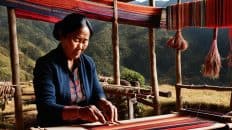
Sagada Weaving: Authentic Handwoven Crafts
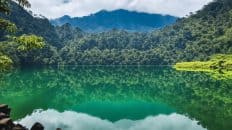
Exploring Lake Danum, Sagada: A Serene Escape
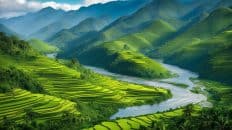
Explore the Wonders of Kalinga Province
Add comment, cancel reply.
Your email address will not be published. Required fields are marked *
Save my name, email, and website in this browser for the next time I comment.

Want Flight, Hotel, and Restaurant Discounts for Your Philippines Trip? Join Below!
Email address:
Buy Me a Coffee

Top Things to Do in Kalinga Province, Philippines
Places to visit in kalinga province.
- 5.0 of 5 bubbles
- Budget-friendly
- Good for Big Groups
- Good for Kids
- Adventurous
- Good for a Rainy Day
- Hidden Gems
- Good for Couples
- Honeymoon spot
- Good for Adrenaline Seekers
- Things to do ranked using Tripadvisor data including reviews, ratings, photos, and popularity.

1. Tinglayan Rice Terraces
2. Palan-ah Falls

3. Balbalasang National Park
4. Lubo Rice Terraces

5. Ryan & Sons Winery
6. Buaya Caves

7. Mini Museum of Kalinga
8. aguinaldo hill, 9. tuga catholic church, 10. aciga tree, 11. sungang viewpoint, 12. tiwod spring, 13. ugid maling subterranean river, 14. cadamayan falls, 15. tongango caves, what travellers are saying.
- Tinglayan Rice Terraces
- Ryan & Sons Winery
- Palan-ah Falls
- Balbalasang National Park
- Lubo Rice Terraces
- Buaya Caves
- Cadamayan Falls
Jude The Tourist

Kalinga Tradition and Culture: A Journey Through the Rich Heritage of the Cordillera”
- March 28, 2023

Kalinga is a province located in the northern region of the Philippines. This rugged terrain is known for its pristine beauty and rich cultural heritage that has been passed down from generation to generation. The province is home to the Kalinga people, an indigenous tribe known for their bravery, artistry, and unique way of life. In this article, we will explore the fascinating culture and traditions of the Kalinga, from their intricate tattooing practices to their traditional clothings, traditional music, traditional dance and traditional weaving. Join us on a journey through the land of Kalinga, and discover the beauty and richness of this hidden gem in the Philippines.
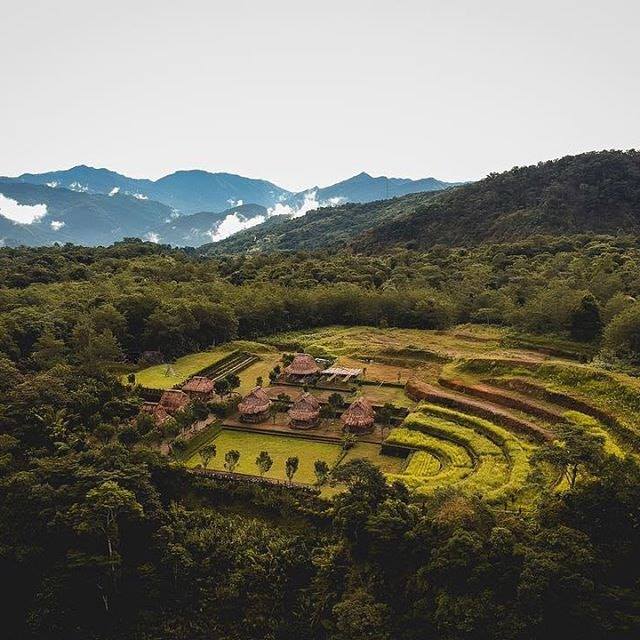
BRIEF HISTORY
The Kalinga people have a long and fascinating history. They are believed to have migrated to the Cordillera region of the Philippines more than 2,000 years ago. They have managed to preserve their way of life despite the influx of modernization and colonialism in the country. One of the unique features of the Kalinga culture is their practice of headhunting, which was once a common tradition in the region. But that was a long time ago village elders are now successful without headhunting. But that was a long time ago and village elders are now successful without headhunting.
KALINGA TRADITION AND CULTURE
Kalinga culture is known for its intricate body art, traditional clothing, and music. The people of Kalinga are famous for their intricate tattoos, which are considered a sign of bravery and status. These tattoos are often found on the arms, legs, chest, and face, and are believed to have magical powers that protect the wearer.
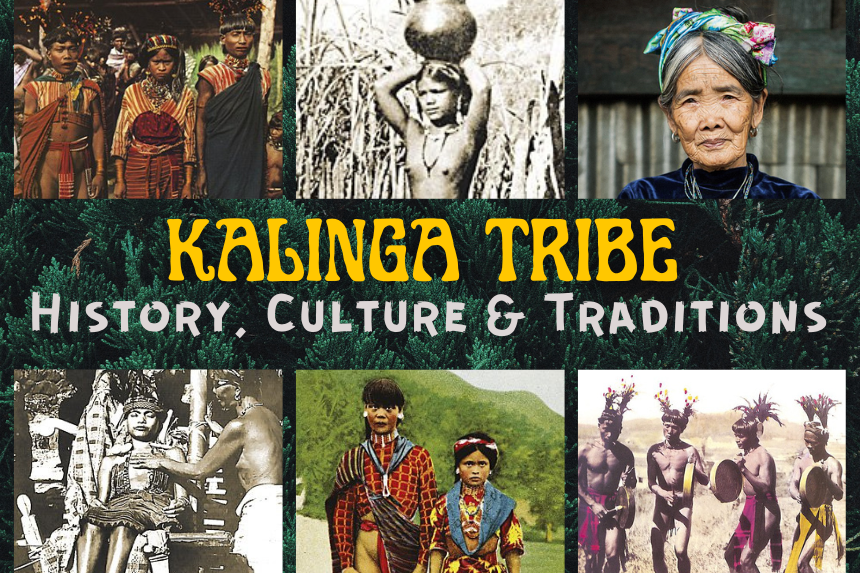
KALINGA TRADITIONAL CLOTHING
The Kalinga province of the Philippines is known for its rich and diverse culture, which includes traditional clothing that is unique and colorful. The traditional clothing of the Kalinga people reflects their history, beliefs, and way of life. Here is a brief overview of the traditional clothing of Kalinga:
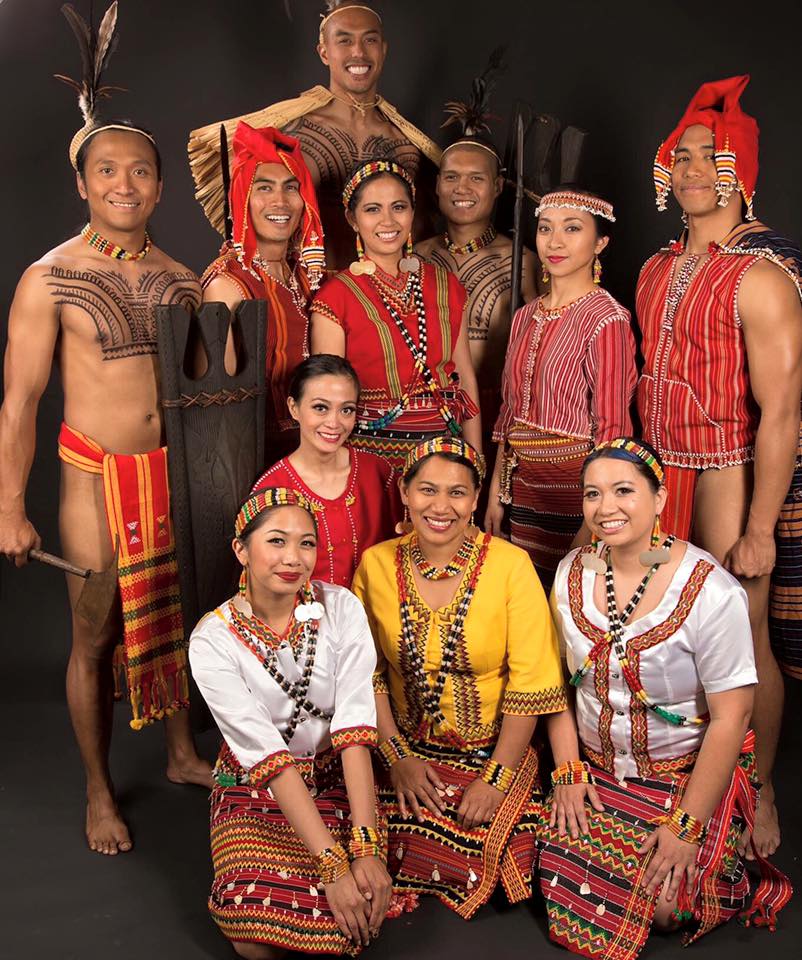
Kalinga Traditional Clothing of Men
The traditional clothing of Kalinga men includes a bahag, a loincloth made from woven fabric or animal hide, and a turban or headscarf. They also wear a sleeveless vest or jacket, often embroidered with intricate patterns and designs. The vest is called wanes or bandi, and is worn over a plain white undershirt. The wanes are often made from handwoven cotton or abel cloth, a locally produced fabric.
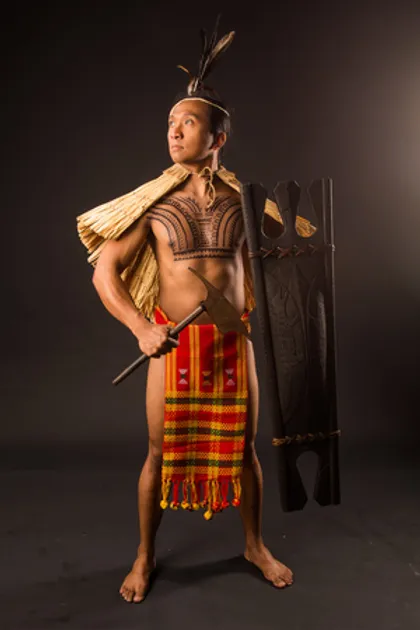
Kalinga Traditional Clothing of Women
The traditional clothing of Kalinga women is characterized by its bright colors and intricate designs. Women wear a long-sleeved blouse called a bado, which is often embroidered with intricate designs and patterns. The blouse is worn over a skirt called a tapis, which is also brightly colored and adorned with embroidery or beadwork. Women also wear a headscarf called a sanggot, which is often decorated with beads or tassels.
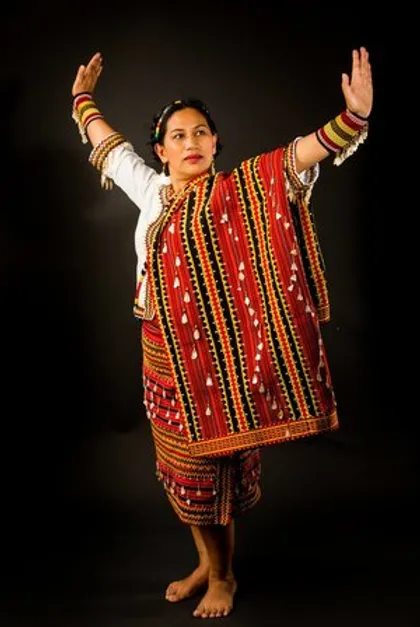
Kalinga Traditional Accessories
Accessories are an important part of traditional Kalinga clothing. Both men and women wear jewelry, including bracelets, necklaces, and earrings made from beads, shells, and silver. Men also wear a belt made from animal hide or woven fabric, while women wear a woven belt called a hakut. Both men and women also wear woven bags or pouches, which are often decorated with beads or embroidery.

Significance and Importance
The traditional clothing of the Kalinga people is not just a matter of fashion but is deeply rooted in their history, beliefs, and way of life. Each piece of clothing is carefully crafted and adorned with intricate patterns and designs that reflect their cultural heritage. The clothing is often worn during special occasions such as weddings, funerals, and festivals, and serves as a symbol of the community’s unity and cultural identity.
The traditional clothing of Kalinga is a vibrant and important aspect of their culture. It reflects their history, beliefs, and way of life, and serves as a reminder of their rich cultural heritage. The colorful fabrics, intricate embroidery, and unique designs make Kalinga clothing a work of art and a source of pride for the Kalinga people.
KALINGA TRADITIONAL TATTOO
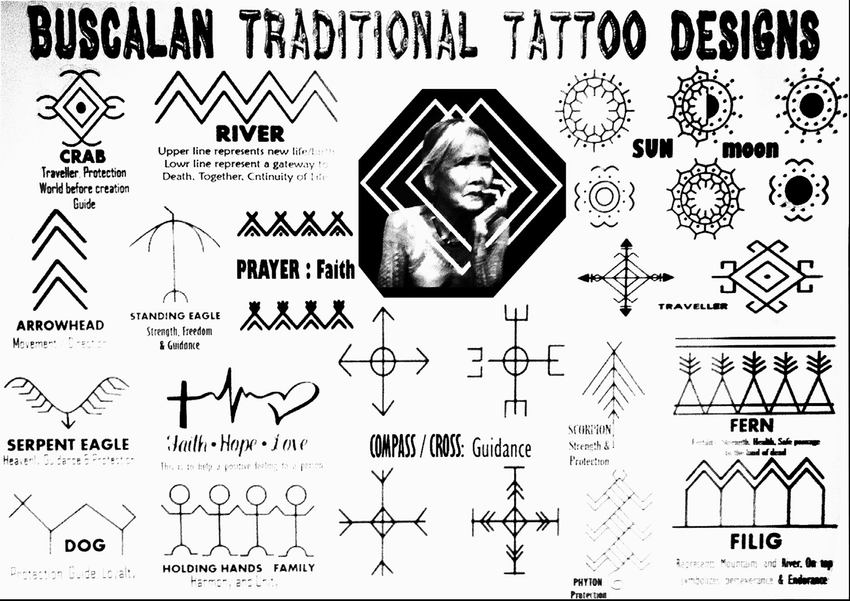
The tattoo is another important aspect of Kalinga culture, particularly among women. The traditional tattoo, known as “batok”, is done using a thorn and a bamboo stick. The designs are intricate and unique to each individual and are seen as a symbol of beauty, courage, and strength.
The Living National Treasure of Kalinga: Apo Whang-od
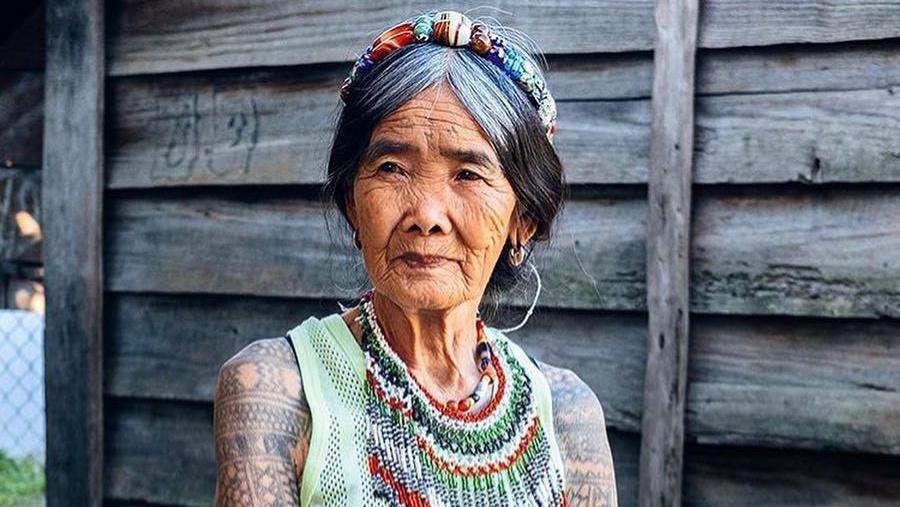
Apo Whand-Od
Apo Whang-Od is a legendary tattoo artist from the Kalinga province of the Philippines. She is known for her traditional tattooing skills and has gained worldwide recognition for her artistry and contribution to the preservation of Kalinga culture. Here is a brief history of Apo Whang-Od and her legacy:
Apo Whang-Od was born in 1917 in Buscalan, a remote village in the Kalinga province. She grew up in a traditional Kalinga household and was taught the art of traditional tattooing at a young age. She learned the ancient techniques from her grandfather and mentor, the legendary tattoo artist, Fang-Od.
The traditional tattooing process, also known as “batok,” involves using a thorn from a pomelo tree and a bamboo stick to create intricate designs on the skin. The process is painful and can take several days to complete, but the results are stunning and unique to each individual.
Apo Whang-Od’s contribution to Kalinga culture has been significant. She has helped to preserve the traditional tattooing techniques that have been passed down through generations and has inspired a new generation of artists to carry on the tradition.
Recognition and Fame Apo Whang-Od gained international recognition in the early 2000s when her artistry was featured in documentaries and articles about traditional tattooing. She has been invited to tattoo celebrities and visitors from all over the world, and her fame has brought tourism and economic opportunities to her village.
Apo Whang-Od’s legacy goes beyond her artistry. She has inspired a renewed interest in Kalinga culture and has helped to preserve the unique customs and traditions of her people. Her work has also contributed to the development of the local economy and has helped to bring attention to the Kalinga province.
Apo Whang-Od is a true icon of Kalinga culture and a testament to the resilience and ingenuity of her people. Her artistry and legacy continue to inspire and fascinate people from all over the world, and she remains an important figure in the history of traditional tattooing and the preservation of indigenous culture.
KALINGA TRADITIONAL DANCE AND MUSIC
The Kalinga province of the Philippines is known for its rich and diverse cultural heritage, including traditional music that is both unique and captivating. Kalinga music is a reflection of their history, beliefs, and way of life. Here is a brief overview of the traditional music of Kalinga:
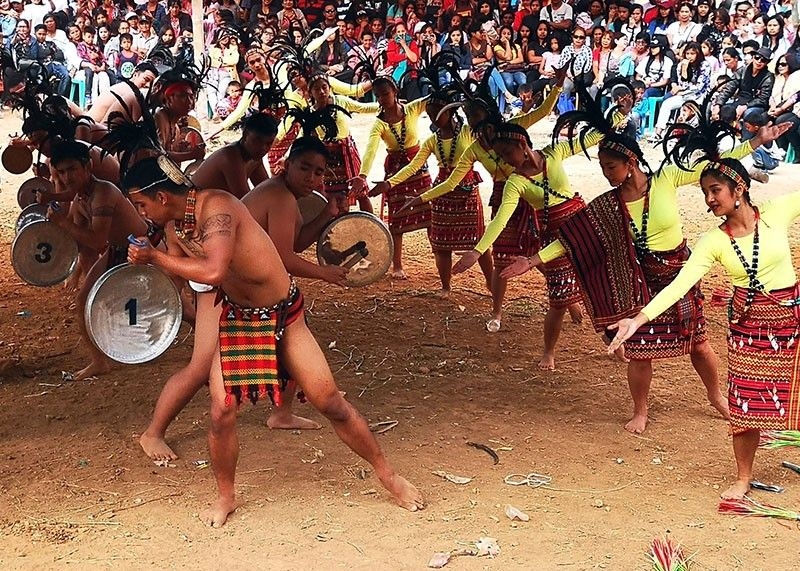
KALINGA TRADITIONAL MUSIC
The traditional music of Kalinga is primarily characterized by the use of indigenous instruments. These include the gong, a percussion instrument made of bronze or brass, and the gangsa, a set of small gongs that are played together to produce a rhythmic pattern. The kulintang, another percussion instrument, is also used in Kalinga music. Other instruments include the nose flute, a wooden instrument that is played by blowing air through the nostrils, and the bamboo flute, which is made from a bamboo reed and is played by blowing air through a hole.
The traditional music of Kalinga is characterized by its unique rhythm and melody. The rhythm is often created by the use of multiple gongs played together in a synchronized pattern, while the melody is created by the use of different notes played on the gongs. The melodies are often based on traditional folk tunes that have been passed down through generations and are often accompanied by traditional Kalinga dances.
The traditional music of Kalinga is an important part of their cultural heritage and serves as a means of preserving their history and traditions. The music is often played during special occasions such as weddings, funerals, and festivals, and serves as a symbol of the community’s unity and cultural identity. It is also an important source of entertainment and enjoyment and is enjoyed by people of all ages.
While traditional Kalinga music remains an important part of their cultural heritage, it has also been influenced by modern music and technology. Contemporary Kalinga musicians have incorporated modern instruments such as guitars and keyboards into their music, and have experimented with new styles and genres. However, they continue to draw inspiration from their traditional music and use it as a foundation for their modern creations.
The traditional music of Kalinga is a unique and important aspect of their culture. It reflects their history, beliefs, and way of life, and serves as a means of preserving their cultural heritage. The rhythmic patterns and melodies of Kalinga music are both captivating and distinctive and continue to inspire and entertain people of all ages.
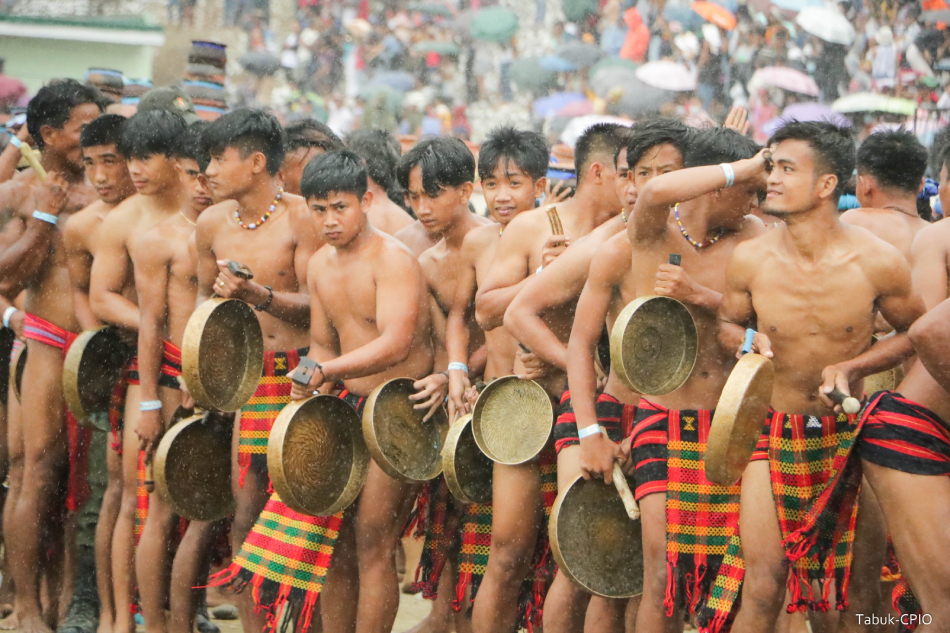
KALINGA TRADITIONAL DANCE
The Philippines is home to a diverse array of indigenous cultures, each with its own unique traditions and practices. One of the most vibrant and colorful of these is the Kalinga culture, which has a long and rich history of dance and music. Kalinga traditional dance is a celebration of the community’s culture, identity, and way of life, and it has remained a vital part of their traditions to this day.
The Kalinga traditional dance is performed during various occasions such as weddings, funerals, and other significant events in the community. The dance is a group performance, with both men and women participating, and it is usually accompanied by the sound of gongs, bamboo flutes, and other traditional instruments. The dance steps are intricate and precise, with the performers moving in unison to create a mesmerizing rhythm that reflects the beat of the music.
One of the most popular Kalinga traditional dances is the “tadek” or the “dance of the warriors.” This dance is performed by male members of the community, dressed in their traditional warrior attire, which includes shields, spears, and other weapons. The dance is a tribute to the community’s history of warfare and is intended to showcase the warriors’ strength, courage, and prowess.
Another popular Kalinga traditional dance is the “sakuting,” which is a dance performed by male and female members of the community. This dance is usually performed during Christmas and other festive occasions and is characterized by the use of sticks, which the performers strike together rhythmically. The sakuting dance is a celebration of the community’s unity and resilience, and it is meant to symbolize the community’s ability to overcome adversity.
The Kalinga traditional dance is not only a form of entertainment but also a way for the community to pass down their cultural heritage to future generations. Through dance, the community can preserve and promote its culture, values, and way of life. The dance is also an opportunity for the community to come together, celebrate their traditions, and strengthen their sense of community and identity.
The Kalinga traditional dance is a vital part of the Kalinga culture, reflecting the community’s values, beliefs, and way of life. It is a celebration of their identity and a way for them to preserve and pass down their cultural heritage to future generations. The dance is not only a form of entertainment but also a symbol of the community’s unity, resilience, and strength.
TRIVIA: DID YOU KNOW THAT KALINGA HAD SET A 2 GUINNESS WORLD OF RECORD IN ONE DAY? (3,440 male gong beaters and 4,681 female banga dancers) During the “Awong Chi Gangsa, Agtu’n Chi Banga”( A call of a thousand gongs, the dance of a thousand pots).
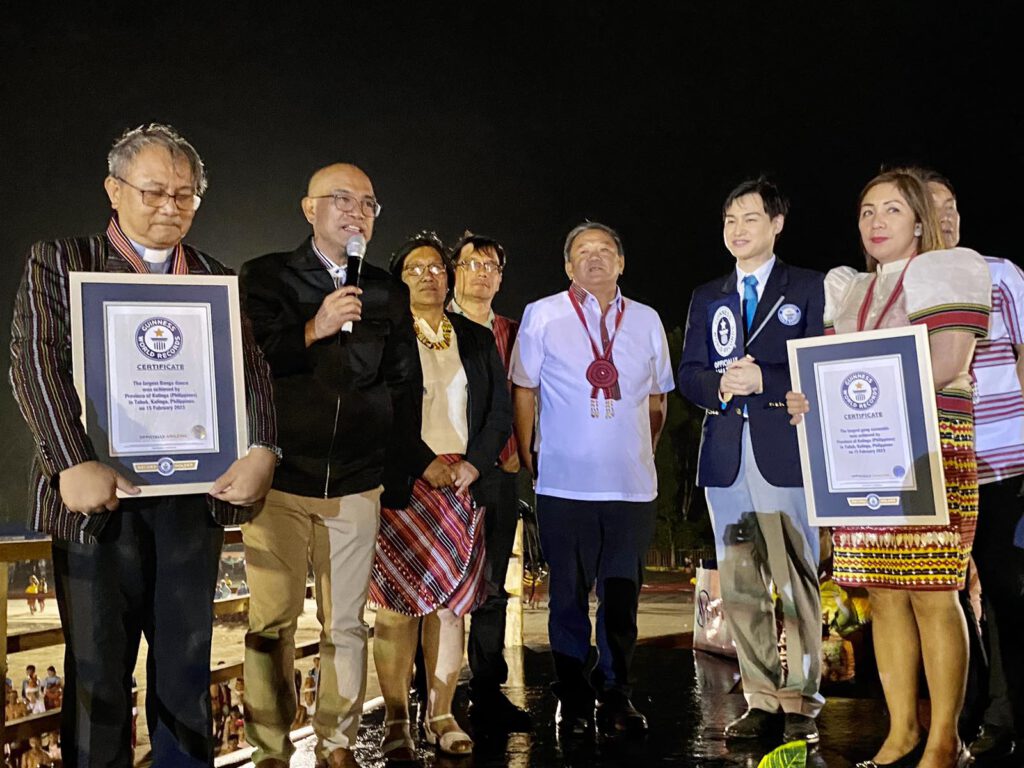
KALINGA TRADITIONAL WEAVING
Weaving has been an integral part of the cultural heritage of Kalinga, a province located in the northern region of the Philippines. The people of Kalinga are renowned for their skill and artistry in weaving, which has been passed down from generation to generation.
The weaving tradition in Kalinga can be traced back to pre-colonial times when it was a vital part of their daily life. Women were the primary weavers, and they would use various natural materials such as abaca, cotton, and rattan to create intricate designs on their textiles.
Kalinga textiles are known for their vivid colors, intricate patterns, and high-quality fabric. The traditional designs used in Kalinga weaving often depict the natural environment and cultural symbols of the Kalinga people, such as the ladder, which represents their connection to the spirit world.
The weaving process in Kalinga is done on a backstrap loom, which is a traditional weaving tool that has been used for centuries. The loom is set up using bamboo poles and is attached to the weaver’s back with a strap. The weaver then uses their hands and feet to control the tension on the threads while creating the textile.
Weaving in Kalinga is not just a means of creating textiles but also a significant part of their cultural identity. The people of Kalinga take pride in their weaving tradition and work hard to preserve it through various cultural activities and festivals.
The weaving tradition in Kali nga has also become a means of livelihood for many families in the province. Women in particular have been able to earn income through their weaving skills, which has helped improve their economic status and provided opportunities for them to continue their craft.
Weaving has played a significant role in the cultural heritage of Kalinga, Philippines. The artistry and skill of the weavers have been passed down from generation to generation, and their textiles have become a significant part of their cultural identity. Weaving in Kalinga is not only a means of creating beautiful textiles but also a way of preserving their culture and providing economic opportunities for their communities.
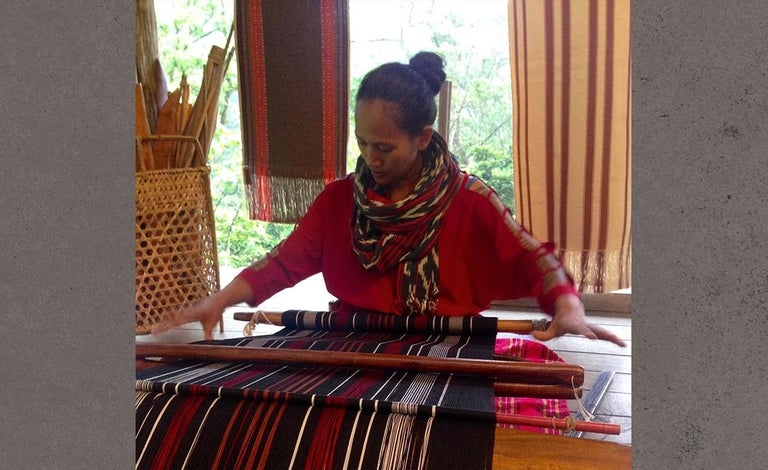
Kalinga is a destination that offers a unique blend of natural wonders, cultural heritage, and adventure. It is a place where visitors can disconnect from the hustle and bustle of city life and reconnect with nature and themselves. With its friendly locals and awe-inspiring landscape, Kalinga is a must-visit destination that should be on every traveler’s bucket list.
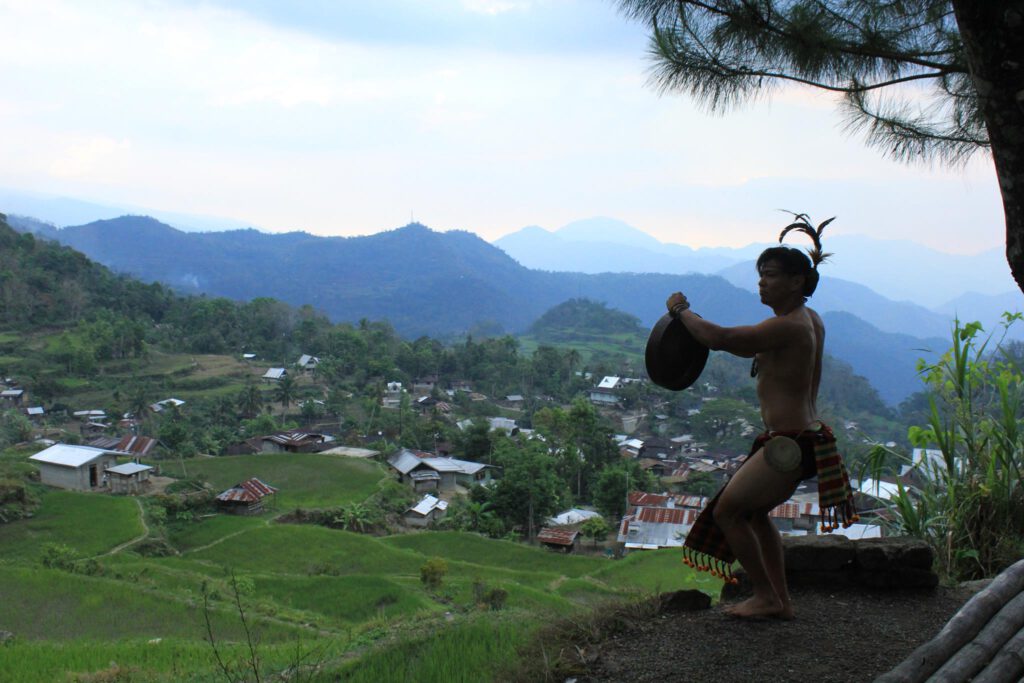
- kalinga , Kalinga Tradition and Culture , philippines tourist destination , philippines tourist spots , tourist spots
Leave a Comment Cancel reply
Save my name, email, and website in this browser for the next time I comment.
Philippines: Beauty Reveal
Journey to the legendary whang-od in buscalan, kalinga: an ultimate guide.
- In Climbing , Natural Beauty
- February 13, 2024
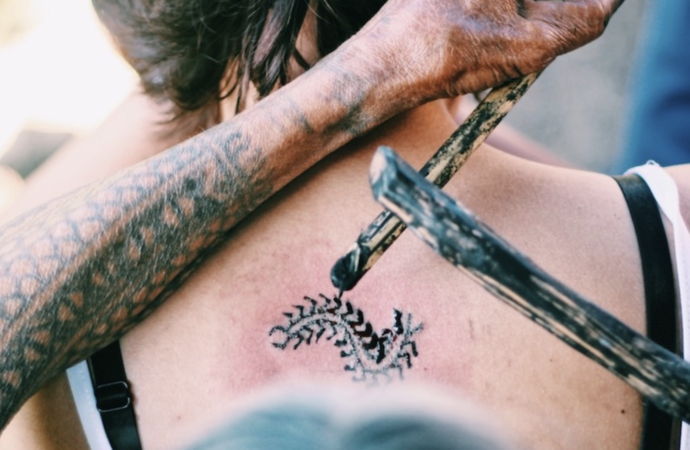
Embarking on a journey to Buscalan, a secluded village in Kalinga, Philippines, is not just a travel experience; it’s a pilgrimage to the heart of ancient artistry. Whang-Od Oggay, the centenarian and the last mambabatok (traditional Kalinga tattooist) of her generation, has put Buscalan on the global map. Travelers and tattoo enthusiasts from around the
Embarking on a journey to Buscalan, a secluded village in Kalinga, Philippines, is not just a travel experience; it’s a pilgrimage to the heart of ancient artistry. Whang-Od Oggay, the centenarian and the last mambabatok (traditional Kalinga tattooist) of her generation, has put Buscalan on the global map. Travelers and tattoo enthusiasts from around the world flock to this remote village to receive a tattoo from her, a mark not just of beauty but of bravery, tradition, and history.
From Manila International Airport to Buscalan, Kalinga
The journey to Buscalan begins at Manila International Airport. From Manila, the most common route is to take a bus or a private vehicle to Bontoc, Mountain Province, which is about 10 to 12 hours. From Bontoc, another hour’s journey by jeepney or hired motorcycle will get you to the jumping-off point for Buscalan. The last leg of the journey involves a trek, which can take anywhere from 15 minutes to an hour, depending on your pace.
Traveling to Buscalan, Kalinga, involves a series of steps that take you deep into the heart of the Cordilleras. Here’s a bulletized guide to navigate your journey:
- Start at Manila International Airport : Your journey begins in Manila, the capital city of the Philippines.
- Take a bus from Manila to Baguio City. The trip usually takes about 6 hours.
- Enjoy a meal break and explore Baguio, known for its cool climate and pine trees.
- From Baguio, board a bus or a van going to Bontoc. This leg takes approximately 6 hours.
- The route offers scenic views of the mountainous terrain.
- In Bontoc, find a jeepney or hire a motorcycle (habal-habal) to take you to the turning point for Buscalan. This ride is about an hour.
- This is your last chance for modern conveniences before the trek.
- From the drop-off point, begin the trek to Buscalan. Depending on your pace, this can take between 15 minutes to an hour.
- The path is well-trodden but can be steep in places, so good footwear is recommended.
- Pack Light : Carry only essentials to make the trek easier.
- Stay Hydrated : Bring water for the journey, especially for the trek.
- Local Guides : Employing a local guide is not just helpful but also a way to contribute to the local economy.
- Cash : Make sure to bring enough cash as there are no ATMs in Buscalan.
- Respect Local Customs : Learn about and respect the local culture and traditions.
By following these steps and tips, you’ll be well-prepared for your journey to Buscalan, Kalinga, ready to experience the rich culture and breathtaking landscapes that await.
Along the way, especially if you’re traveling by bus or car, there are numerous places to indulge in local cuisine. Notable stops include Baguio City, known for its fresh strawberries and ube (purple yam) delicacies, and Bontoc, where you can enjoy hearty Igorot dishes like pinikpikan (a traditional chicken soup) and etag (smoked pork).
Tattoo Booking with Whang-Od
To ensure a session with Whang-Od, it’s crucial to plan your visit well in advance. Due to her age and the high demand, her availability can be limited. Contact local guides in Buscalan via social media or phone as they can provide the latest information and assist with bookings. Remember, patience and respect for the process are essential.
One of the local tour guides we have known was Remy:
Alternative Tattoo Artists
If Whang-Od is not available, fear not. Her grandnieces, Grace Palicas and Elyang Wigan, are skilled mambabatok who have been trained under Whang-Od’s guidance. They continue the tradition with the same dedication and skill, ensuring the art form survives for future generations.
Nearby Tourist Spots
Kalinga is not just about tattoos. It’s a region rich in culture and natural beauty. Nearby attractions include the Chico River, perfect for whitewater rafting; the historic Banaue Rice Terraces; and the hot springs of Tinglayan. Each offers a unique glimpse into the natural and cultural heritage of the Cordilleras.
Preparing for Your Visit
Visiting Whang-Od and Buscalan requires preparation. Essential tips include:
- Fitness Level : The trek to Buscalan is manageable for most, but being in good physical condition will make the journey more enjoyable.
- Cultural Sensitivity : Understand and respect the local customs and traditions. Dress modestly and ask permission before taking photos.
- Cash : There are no ATMs in Buscalan, so bring enough cash for your entire stay.
- Accommodations : Homestays are the primary option in Buscalan, offering a unique opportunity to immerse yourself in local life.
Experiences with Whang-Od
Visitors often share stories of Whang-Od’s warm hospitality and her sharp sense of humor. Despite the language barrier, her welcoming nature makes every encounter memorable. Receiving a tattoo from her is described as a deeply moving experience, connecting the individual to centuries of tradition.
Whang-Od Clan History and Traditions
Whang-Od belongs to the Butbut tribe in Kalinga, where the art of batok (tattooing) has been passed down for generations. Traditionally, these tattoos were earned by warriors and headhunters for their acts of bravery. Today, Whang-Od uses the same traditional tools—a bamboo stick and a thorn from a pomelo tree—to create these tattoos. Each design is symbolic, representing elements of nature, tribal identity, and personal milestones.
The story of Whang-Od and the Kalinga tattooing tradition is a testament to the resilience of indigenous cultures. It’s a reminder of the beauty that comes from preserving and respecting ancient traditions.
Traveling to Buscalan to meet Whang-Od is more than just a quest for a tattoo; it’s an adventure into the heart of the Cordilleras, offering a rare glimpse into a way of life that has remained unchanged for centuries. It’s a journey that challenges, rewards, and transforms, leaving an indelible mark both on the skin and the soul.
Denserge Garcia
- Natural Beauty
Posts Carousel

- April 16, 2024

Exploring the Enchanting Beauty of Burauen, Leyte
- February 7, 2024
ED SHEERAN TO BRING HIS RECORD-BREAKING + - = ÷ x TOUR TO ASIA, AND EUROPE IN 2024
Celebrating cebu: a tapestry of culture, cuisine, and history in the heart of the philippines.
- Natural Beauty , Tourism News , Travel
- February 8, 2024
Luneta Park: Manila's Historic Heart and Soul
Discovering the enchantments of boracay island.
- Beaches , Natural Beauty , Resorts , Tourism News
Latest Posts

Reynaldo Ortega
Administrator.
Dwayne Abio
Harold Yanga
Most commented.

Exploring Tabuk City: Kalinga’s Capital and Beyond
- October 10, 2023
- Tourism Blog
Tabuk City, Kalinga’s capital, is a vibrant blend of culture, nature, and adventure. Immerse yourself in indigenous traditions, explore breathtaking landscapes, and savor local flavors. Whether you seek cultural insights, natural beauty, or thrilling activities, Tabuk offers an unforgettable experience that showcases the heart of Kalinga.
In this blog post, we will take you on a journey to explore Tabuk City and its surrounding areas. Get ready to immerse yourself in the local culture, try delicious traditional cuisine, and embark on thrilling outdoor activities. Join us as we go beyond the city limits and discover the hidden gems of this beautiful region.
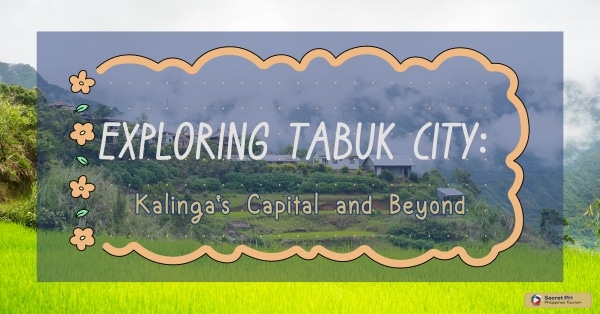
Tabuk City: An Introduction to Kalinga’s Capital
Tabuk City, situated in the heart of the Philippines’ Kalinga province, serves as the region’s capital and a gateway to the cultural and natural wonders of this remote and enchanting destination. As you step into Tabuk, you’ll immediately sense the rich tapestry of indigenous traditions that have been preserved for generations. The city is home to various indigenous communities, including the renowned Kalinga tribes, each with its unique customs, languages, and artistic expressions.
Visitors can delve into this cultural heritage by visiting museums, participating in local festivals, or engaging with the warm and welcoming residents who take pride in sharing their traditions. Beyond its cultural significance, Tabuk City also boasts a stunning natural landscape. Surrounded by rugged mountains and lush valleys, the city is a paradise for nature enthusiasts and adventure seekers.
The Chico River, snaking through the region, offers opportunities for thrilling water activities like rafting and kayaking, while hiking trails lead to breathtaking viewpoints that showcase the mesmerizing beauty of Kalinga. Whether you’re drawn to its vibrant cultural scene or the raw, untouched beauty of nature, Tabuk City beckons as an exciting starting point for an exploration of Kalinga’s treasures.
For directions, click here .
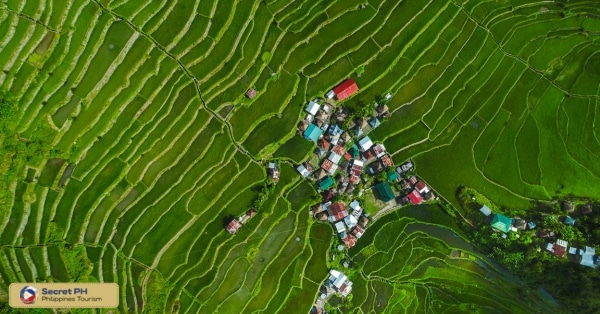
Cultural Treasures: Discovering Indigenous Heritage
Tabuk City lies a hidden treasure trove of cultural heritage, where time-honored traditions of indigenous communities have flourished for centuries. To truly understand the heart and soul of this region, one must embark on a journey to discover the rich tapestry of indigenous cultures that call Tabuk home. Here, we delve into the enchanting world of Cultural Treasures, inviting you to explore the indigenous heritage that defines Tabuk City and the surrounding Kalinga province.
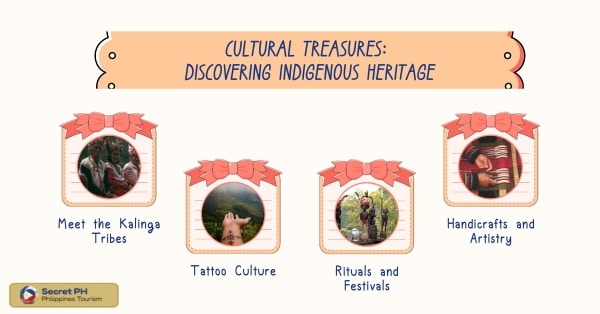
Meet the Kalinga Tribes
The Kalinga people, the dominant indigenous group in the region, are known for their distinct customs, languages, and artistic expressions. With warm hospitality, they invite visitors to share their way of life, offering insights into their intricate social structures and deep connection with the land.
Whether you engage in conversations with tribal elders, witness traditional rituals, or simply immerse yourself in their daily routines. Encountering the Kalinga tribes provides a profound understanding of the enduring heritage that defines Tabuk City and the broader Kalinga province.
Tattoo Culture
The Tattoo Culture among the tribes of Tabuk City, particularly the renowned Kalinga people, unveils an ancient and mesmerizing art form deeply rooted in their history and identity. These intricate and symbolic tattoos, known as “batok” or “pang-ok,” tell compelling stories of bravery, social status, and personal journeys.
Each tattoo design, meticulously crafted by skilled mambabatok (tattoo artists), carries profound cultural significance. Beyond mere adornment, these tattoos serve as a visual language, preserving narratives of courage, tribal affiliations, and life’s milestones. Exploring the Tattoo Culture of the tribes in Tabuk is a journey into the living canvas of their heritage, where every inked symbol embodies a piece of their unique and storied past.
Handicrafts and Artistry
Explore the craftsmanship of indigenous artisans of Tabuk City. Within their communities, skilled artisans passionately weave intricate textiles, fashion exquisite jewelry, and craft traditional weapons, each piece a masterpiece of indigenous artistry. These creations are not merely decorative; they embody the cultural heritage, symbolism, and stories passed down through generations.
The patterns and motifs adorning their handwoven fabrics and jewelry are rich with meaning, reflecting the tribes’ connection to nature, spirituality, and their ancestors. Exploring these handicrafts and engaging with local artisans offers a unique opportunity to appreciate the depth of creativity and cultural pride that thrives within Tabuk’s indigenous communities.
Oral Traditions
Oral traditions in Tabuk City serve as the living archives of indigenous wisdom and history, a priceless inheritance passed down through generations. Elders and storytellers play a vital role in preserving these rich narratives, recounting myths, legends, and historical accounts in their native tongues.
These tales bridge the gap between the past and present, offering invaluable insights into the tribes’ spiritual beliefs, customs, and struggles. Listening to these captivating stories beneath the starlit skies or by the warm hearths of tribal homes is an immersive experience that deepens one’s understanding of the profound connection that Tabuk’s indigenous communities maintain with their cultural heritage.
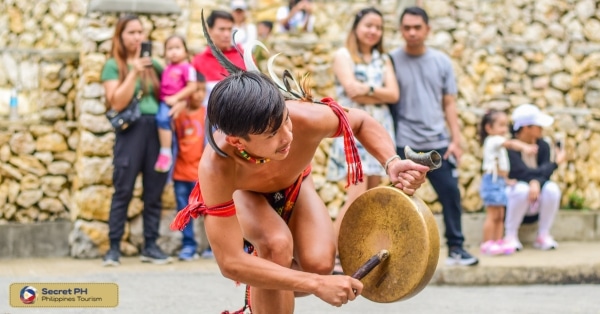
Natural Wonders: Exploring the Beauty of the Region
Beyond the cultural tapestry of Tabuk City, the region unfolds its awe-inspiring Natural Wonders, inviting adventurers and nature enthusiasts to explore its untamed beauty. From rugged mountain ranges to pristine rivers and lush valleys, Tabuk’s landscapes are a testament to nature’s grandeur. This section beckons you to embark on a journey through the region’s breathtaking natural treasures.
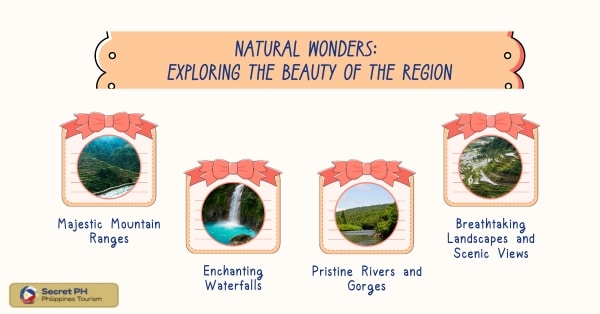
Majestic Mountain Ranges
Tabuk City offers panoramic views and excellent opportunities for mountain enthusiasts. You can embark on challenging treks up the slopes of Mount Mating-oy Dinayao to witness the grandeur of nature from its peak. The rugged terrain and lush greenery provide an unforgettable experience for hikers and photographers alike.
Enchanting Waterfalls
The waterfalls in the Tabuk region beckon with their ethereal beauty and soothing serenity. These cascading wonders, hidden within lush forests and rugged landscapes, offer a mesmerizing escape from the ordinary.
As you stand in their presence, surrounded by the symphony of rushing water and the cool mist on your skin, you’ll find yourself enchanted by the raw, untamed magic that these natural wonders bring to the Kalinga province. Each waterfall is a testament to nature’s artistry, offering a profound connection to the untamed and breathtaking beauty of this remarkable region.
Banga-banga Falls For pictures, booking, and more information, click here .
Address: Dupag, Tabuk City, Kalinga
Pristine Rivers and Gorges
The region surrounding Tabuk City is blessed with pristine rivers and deep gorges that add to its natural allure. The Chico River is a prominent feature, known for its whitewater rafting adventures. Thrill-seekers can navigate the rapids and marvel at the beauty of the surrounding cliffs and valleys. For those seeking a more tranquil experience, the Pasil River offers a serene setting for kayaking or simply enjoying the tranquility of nature.
The Chico River
Pasil River
Breathtaking Landscapes and Scenic Views
Every corner of Tabuk City and its surroundings offers breathtaking landscapes and scenic views. From the terraced rice fields that adorn the mountainsides to the vast open plains that stretch into the horizon, the natural beauty of the region is truly awe-inspiring. Whether you’re driving along the winding mountain roads or embarking on a hike through the countryside, be prepared to be captivated by the stunning vistas that unfold before your eyes.
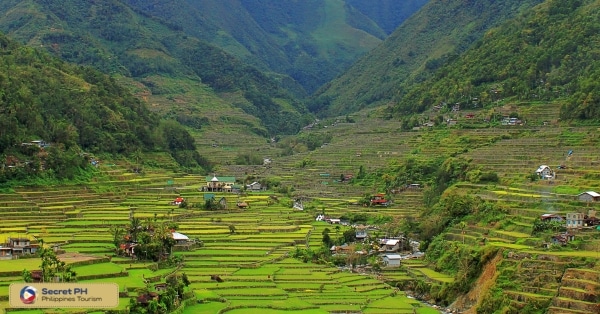
Gastronomic Delights: Savoring Local Cuisine
A journey through this vibrant city also means indulging in the local cuisine that showcases the unique flavors and culinary traditions of the region. From traditional dishes passed down through generations to innovative culinary creations, Tabuk City offers a gastronomic adventure that will satisfy even the most discerning food enthusiasts.
Pinikpikan – One cannot fully experience the culinary scene of Tabuk City without trying the famous Pinikpikan. This traditional dish involves chicken being slowly beaten to tenderize the meat, then cooked with spices and vegetables. The result is a flavorful and hearty soup that is both comforting and delicious.
Kiniing – Prepared by smoking and drying pork or beef meat, Kiniing is a delicacy in Tabuk City. The meat is thinly sliced and can be eaten as is or used as an ingredient in other dishes. Its smoky flavor and tender texture make it a favorite among locals and visitors alike.
Etag – Etag is another specialty of Tabuk City that is worth trying. It is cured and smoked pork or beef, similar to ham, but with its own distinct flavor. Etag can be enjoyed on its own as a snack or incorporated into various dishes, adding a unique twist to familiar recipes.
Kalinga Coffee – To complete your culinary journey in Tabuk City, don’t miss out on trying the local Kalinga Coffee. Grown in the mountainous region, this coffee boasts a unique flavor profile that is rich and aromatic. Enjoy a cup of freshly brewed Kalinga Coffee and savor the distinctive taste that reflects the region’s agricultural heritage.

Adventure Awaits: Outdoor Activities in Tabuk
For the intrepid traveler seeking exhilaration and a connection with nature, Tabuk City offers a playground of Adventure Awaits. This region, surrounded by breathtaking landscapes, is a haven for outdoor enthusiasts. From adrenaline-pumping activities to serene natural explorations, Tabuk beckons with a wide array of thrilling outdoor adventures
River Rafting on Chico : Brace yourself for the ultimate river adventure as you navigate the challenging rapids of the Chico River. River rafting in Tabuk is an adrenaline-pumping experience that allows you to immerse yourself in the rugged beauty of the region.
Hiking and Trekking : Explore Tabuk’s diverse terrain through a network of hiking trails that cater to different skill levels. Whether you’re a novice or an experienced trekker, there are paths that lead to mesmerizing viewpoints and hidden gems within the mountains.
Cave Exploration : Discover the underground wonders of Tabuk through its intricate cave systems. Go spelunking in caves like the Callao Cave and explore unique rock formations, subterranean rivers, and ancient stalactites and stalagmites.
Mountain Biking : For the thrill of downhill rides and scenic trails, bring your mountain bike and traverse the winding paths that cut through the region’s lush forests and hills.
Rock Climbing : Scale the imposing limestone cliffs and rocky outcrops that abound in Tabuk, providing a challenging yet rewarding experience for rock climbing enthusiasts.
Birdwatching and Wildlife Observation : Tabuk’s pristine natural habitats are a haven for birdwatchers and wildlife enthusiasts. Spot a diverse array of bird species and glimpse wildlife such as monkeys, deer, and more in their natural habitats.
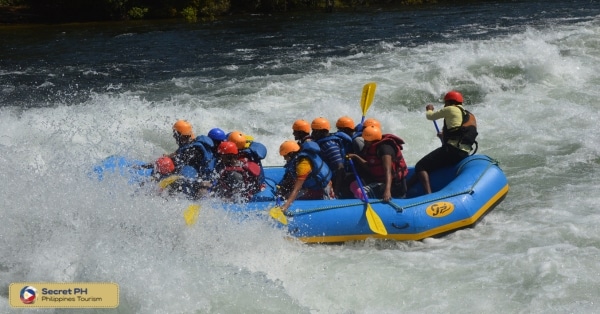
Beyond the City Limits: Day Trips and Nearby Attractions
While Tabuk City itself offers a plethora of captivating experiences, the adventure doesn’t end within its boundaries. Beyond the city limits lies a realm of Day Trips and Nearby Attractions, each brimming with its unique charm and allure. These destinations beckon explorers to delve further into the Kalinga province’s treasures, creating a well-rounded journey through this captivating region.
Banaue and the Banaue Rice Terraces : Venture south of Tabuk City to visit the world-famous Banaue Rice Terraces, a UNESCO World Heritage Site and a testament to the ingenious engineering skills of the indigenous Ifugao people. Witness the grandeur of these ancient terraces, often referred to as the “Eighth Wonder of the World.”
Sagada’s Mystical Caves and Waterfalls : A short drive from Tabuk takes you to the mystical town of Sagada, renowned for its breathtaking caves, including the eerie Sumaguing Cave, and enchanting waterfalls like Bomod-Ok Falls. Explore the cave systems, hike through verdant hills, and immerse yourself in Sagada’s unique culture.
Kalinga’s Remote Villages : Delve deeper into Kalinga’s cultural tapestry by visiting remote villages that offer authentic encounters with indigenous communities. Engage in homestays, cultural exchanges, and witness traditional rituals and ceremonies.
Maligcong’s Scenic Beauty : Discover the serene village of Maligcong, where picturesque landscapes of rice terraces and rolling hills await. The village offers excellent trekking opportunities and a chance to savor the tranquility of rural life.
Kabayan’s Ancient Mummies : A journey north leads to the municipality of Kabayan, known for its centuries-old burial caves containing well-preserved mummies. Explore the caves and gain insights into the fascinating burial practices of the Cordilleran people.
Kalinga’s Waterways : Explore the scenic waterways of Kalinga, including the Chico River, by embarking on adventurous river cruises or kayaking expeditions. These experiences offer a unique perspective of the region’s natural beauty.
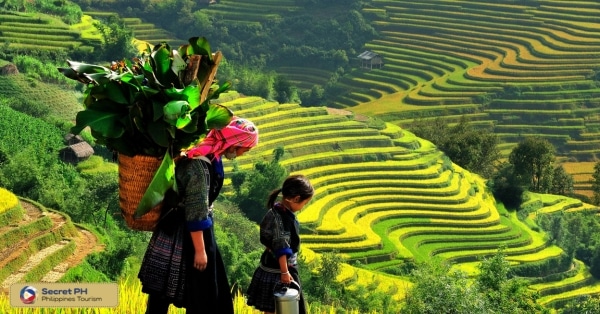
In conclusion
Tabuk City is a destination that offers a unique and immersive experience for travelers seeking to explore the cultural heritage, natural wonders, and adventure opportunities of the Kalinga province. From delving into the intricate artistry of indigenous communities to embarking on thrilling outdoor activities and day trips to nearby attractions, there is something for every type of traveler in this vibrant city. So pack your bags and get ready to discover the hidden treasures of Tabuk City, as it promises a journey filled with unforgettable experiences and cherished memories.
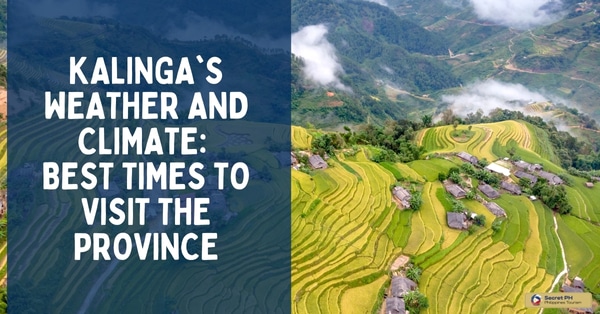
Kalinga’s ever-changing weather offers a prime visit window during its dry season from November to April, ideal for outdoor
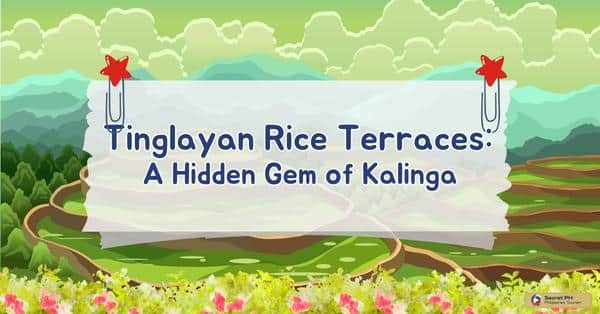
Tinglayan Rice Terraces in Kalinga are a photographer’s paradise, known for their intricate beauty. This region is steeped in
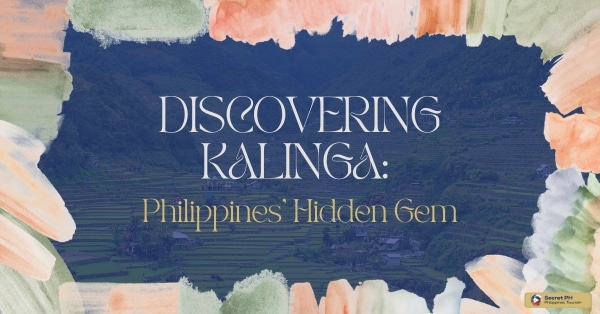
Kalinga, in the Philippines, offers a rich cultural experience with traditional festivals, dances, and music. You can witness the
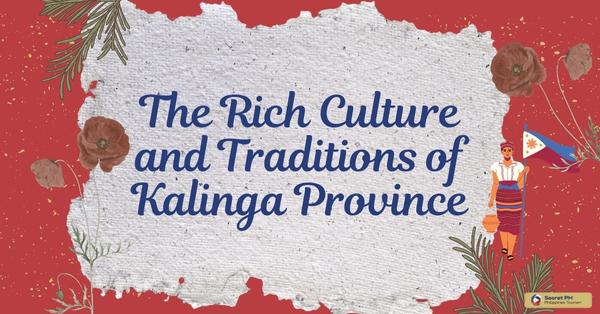
Kalinga Province, in the Philippines, teems with a vibrant culture upheld by its indigenous people. This culture includes rich

Kalinga is a region in the Philippines renowned for its traditional weaving techniques. Founded over 500 years ago, it
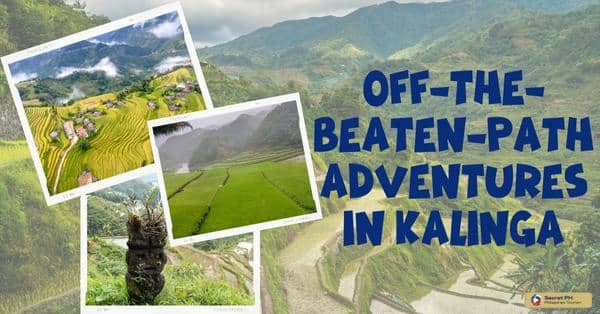
Kalinga is a remote mountain province in the Cordillera region of Northern Philippines. With its unique mix of cultural
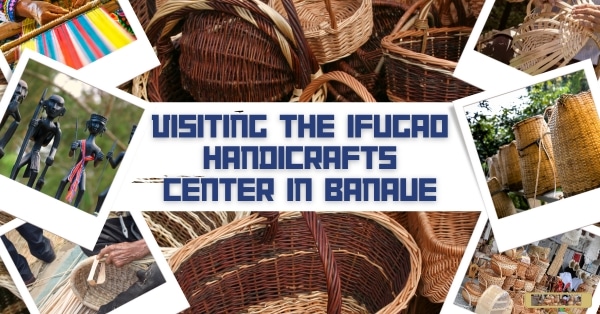
Visiting the Ifugao Handicrafts Center in Banaue is an experience that immerses you in a unique culture of traditional
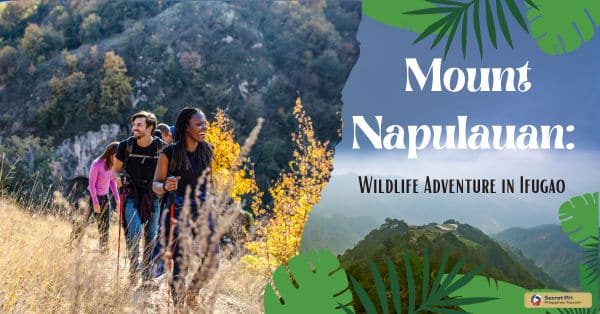
Immerse yourself in the untouched paradise of Ifugao, where Mount Napulauan beckons with its lush landscapes and diverse wildlife.
10 Top Tourist Spots in Kalinga Apayao Philippines ( Best Things To Do)
Kalinga Apayao Philippines is designed as a tourism department area that make waves in the ecotourism world. It is land for legendary and enigma that portrays stories of fight, agreement and quiteness.
The braveness of the I-Kalinga protect their land and water from combine hostility. You can also see the Chico River Dam rings hope and innovation among indigenous people in the world.
It is the land endless charm and reward and has a hidden wonders echo in the stunning songs and dances of its people.
Here are the best attractions and top tourist spots in Kalinga Apayao Philippines :
Top Tourist Spots in Kalinga Apayao ( Best Things To Do)
1. binalssan falls.
Binalasan Falls – is one of the simple tourist destination that is located in Pasil, Kalinga.
It rapids for more than 30 meters on a very huge pool that emerge from the thick moist forests. It has a strong and agitate current that swimming on the pool can be dangerous.
You can see flourishing vegetation of shrubs, mossess and grasses that surrounds the falls during summer time. If you go there, you have to hike for at least an hour in the road, climb over the bluff streams and jump across the rock.
2. Mt. Binuluan
Mt. Binuluan – is another popular tourist spots in Kalinga Apayao Philippines. I t erupted during the past century and you will be interested in the existence of fumarole fields, solfataras and hot springs on its hill.
It castle over the municipalities of Tinglayan, Pasil and Lubuangan. It stands for more than 2,329 MASL. This mountain is magnificent and it has a mossy forests that covers the upper slopes.
Mt. Binuluan manifolds flora and fauna species like deer and wildpigs.
3. Laroy Falls
Laroy Falls – is an excellent tourist destination in Kalinga Apayao. It is appraised as the tallest falls and it is composes 8 distant rapids jump rowards the Pasil River.
It is located in Pasil, Kalinga and the best time to visit is during rainy season because you can view it on the road. Laroy Falls emerge the water from fresh covered forests upstream.
4. Buaya Caves
Buaya Caves – it facets some stalactite and stalagmite rock formations. You can see stunning room and revealing of cathedrals’ spines and domes.
If you want to visit the cave, you have to await to ascent, climb on rocks, some brook inside, waterfalls and paddle across pools.
There are various parts of the cave were you feel like you are in the golden accommodation and they are associated from each other. It forms a series of covers to the whole mountain hill. It is located in Balbalan, Kalinga.
5. Lubo and Mangali Rice Terraces
Lubo and Mangali Rice Terraces – is a wonderful tourist spots in Kalinga Apayao Philippines. I t looks like a roundabout waterfalls that surrounds the village of Lubo.
You will pass the Tanudan river beside the terraces. It is located in Tanudan and the beautiful tourist spot that has elevated mountains gives a measurable background.
The falls furnish abundant water supply all year round and also the people are very friendly and approachable.
6. Palang - ah Falls
Palang – ah Falls –is also a great destination in Kalinga Apayao. The falls lies adjoining to a canyon in Tulgao, Tinglayan.
Its name was coincide as the shape of a chair “Palang-ah” means a local term for chair. It measures around 40 feet high and it has a very deep pool that sculpt.
The falls protrude a view of a rainbow when the sun strikes. The water is crystal-clear and chilly that is sufficient to harden and comforter of the muscles.
You will also witness the hot spring that has a mix of cold and hot bath.
7. Balbalasang-Balbalan National Park
Balbalasang-Balbalan National Park – constitutes the ecological reward of Kalinga Apayao and to the whole country. It has a cushiony forests that covers most of the park with smear pine and mountainous forests.
The park has been documented with 89 species of birds, 23 species of mammals, 13 species of amphibians, 13 species of reptiles and 25 species of earthworms.
Balbalasang – Balbalan National Park provides a refuge of the negatively-endangered Rafflesia. You will be captivated with homely and breathtaking adventure wherein you might see some of the wildlife species. It is located in Balbalan, Kalinga.
8. Saltan River
Saltan River – it comes from the ample moist forests that is located in Balbalan. The water emanate a moss appearance that invites you to swim during sunny days.
Saltan River have vast hunk and rocks nearby the river, an ideal spot for diving or jumping. It brims with domestic aquatic species like fishes and eels and they served it to visitors in a traditional way.
The river is one of the most habituated tourist spot among locals.
9. Elephant Hill
Elephant Hill –is a must see destination in Kalinga Apayao. It is also the ground of an archaeological marvel, excavating the remains of ancient elephants, crocodiles and a rhinoceros were find.
They also discovered the fossils of the first occupant of the country and the prehistoric man-made tools that were hidden. It is one of the growing tourist spot that is located in Rizal, Kalinga.
10. Guinaang Vilage
Guinaang Village – is one of the ancient tourist spots of the province. During the Philippine-American war , the village beseemed as the abandon shelter of General Emilio Aguinaldo.
The Americans chase him until he was caught in Isabela. It is located in Pasil which offers a simple life in the borderland.
The locals are kind and hospitable. You will be captivated with the interesting views of rice terraces and mountains.
if you are visiting the quiet province of the northern part of the Philippines, check out some of the top tourist spots in Kalinga Apayao Philippines .
Featured Articles on The Philippines
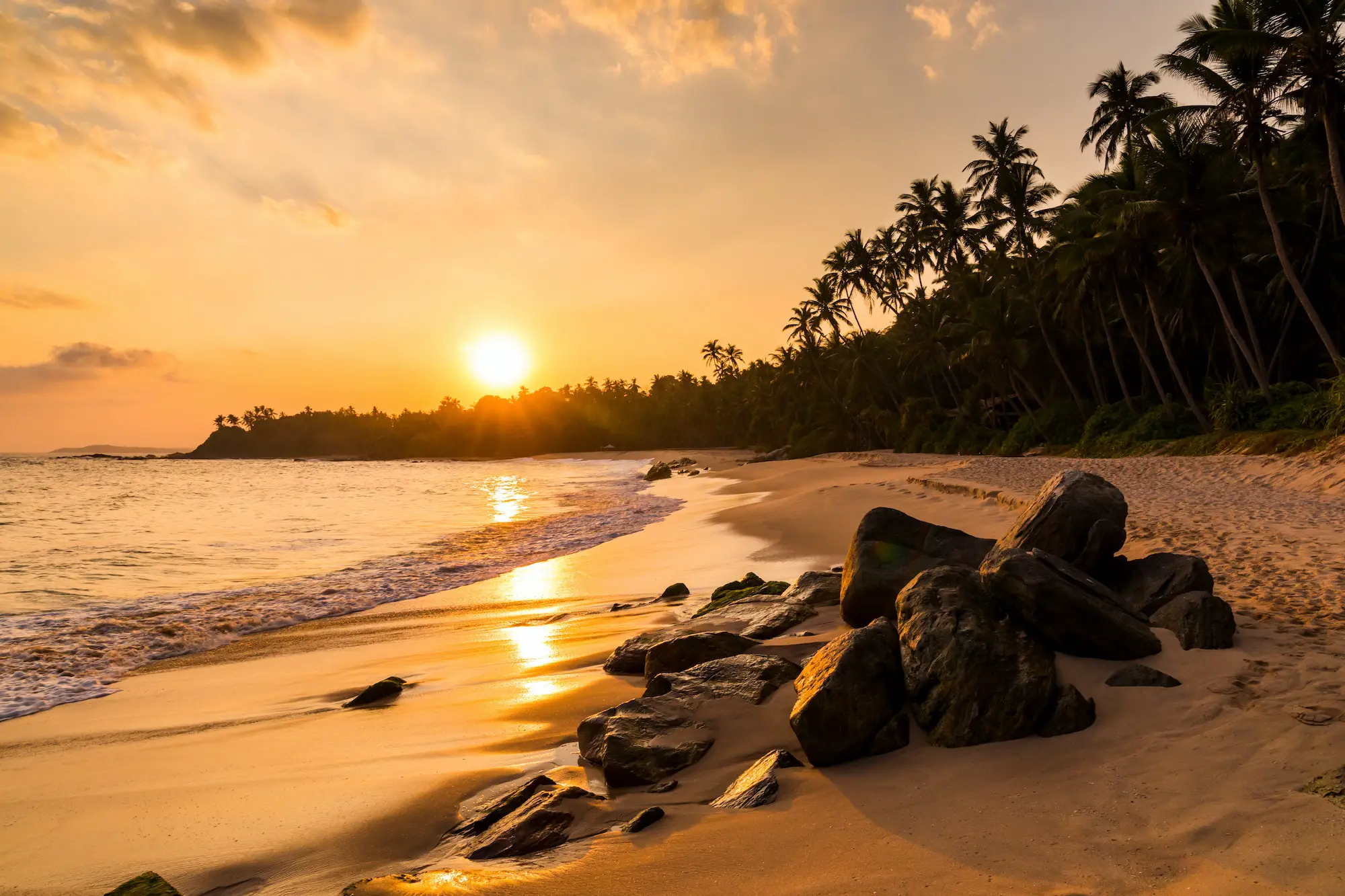
10 Best Beach Resorts in La Union Philippines For A Relaxing Vacation
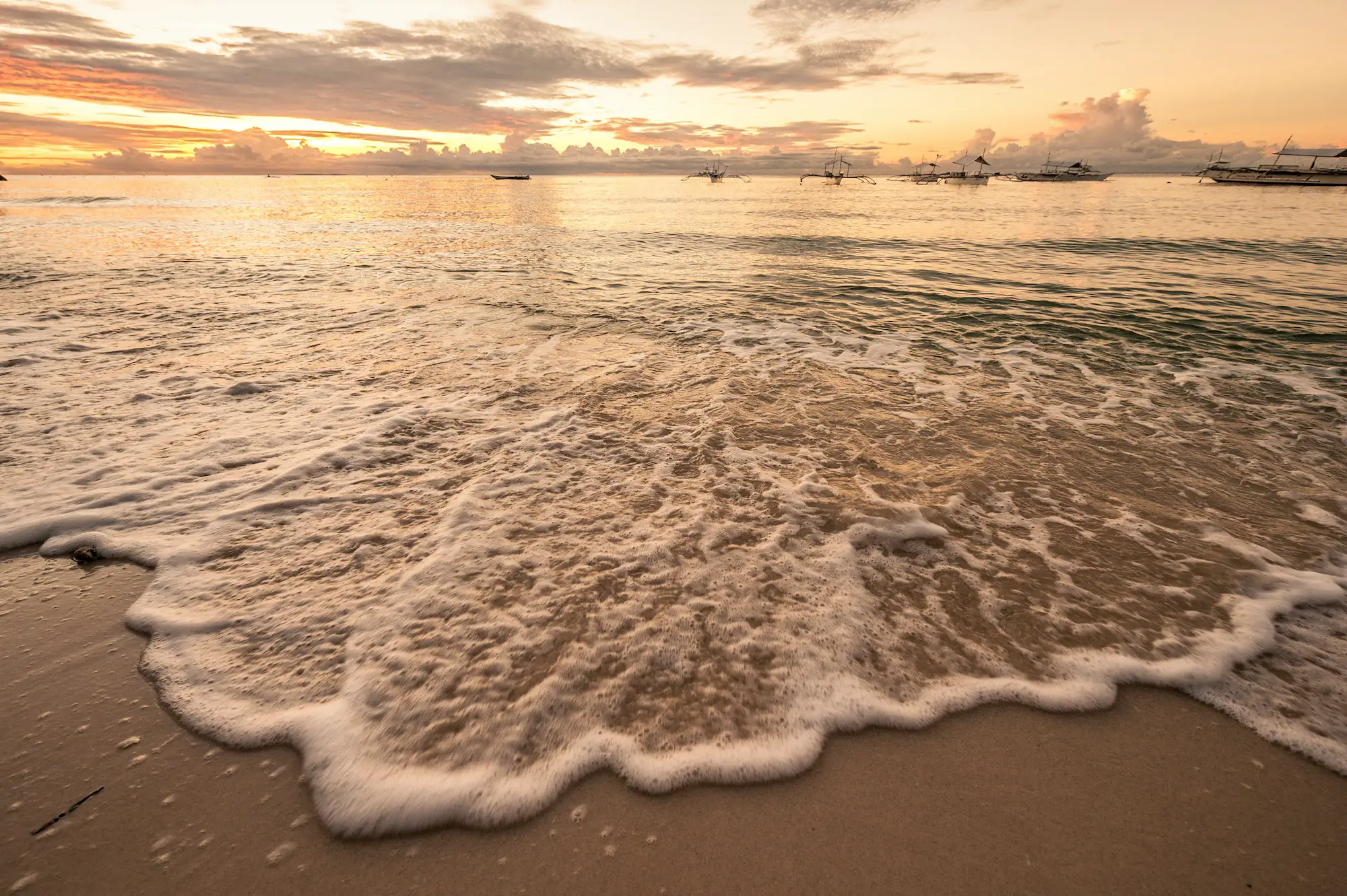
10 Best Beaches in Oriental Mindoro : White Sand Beach Resorts
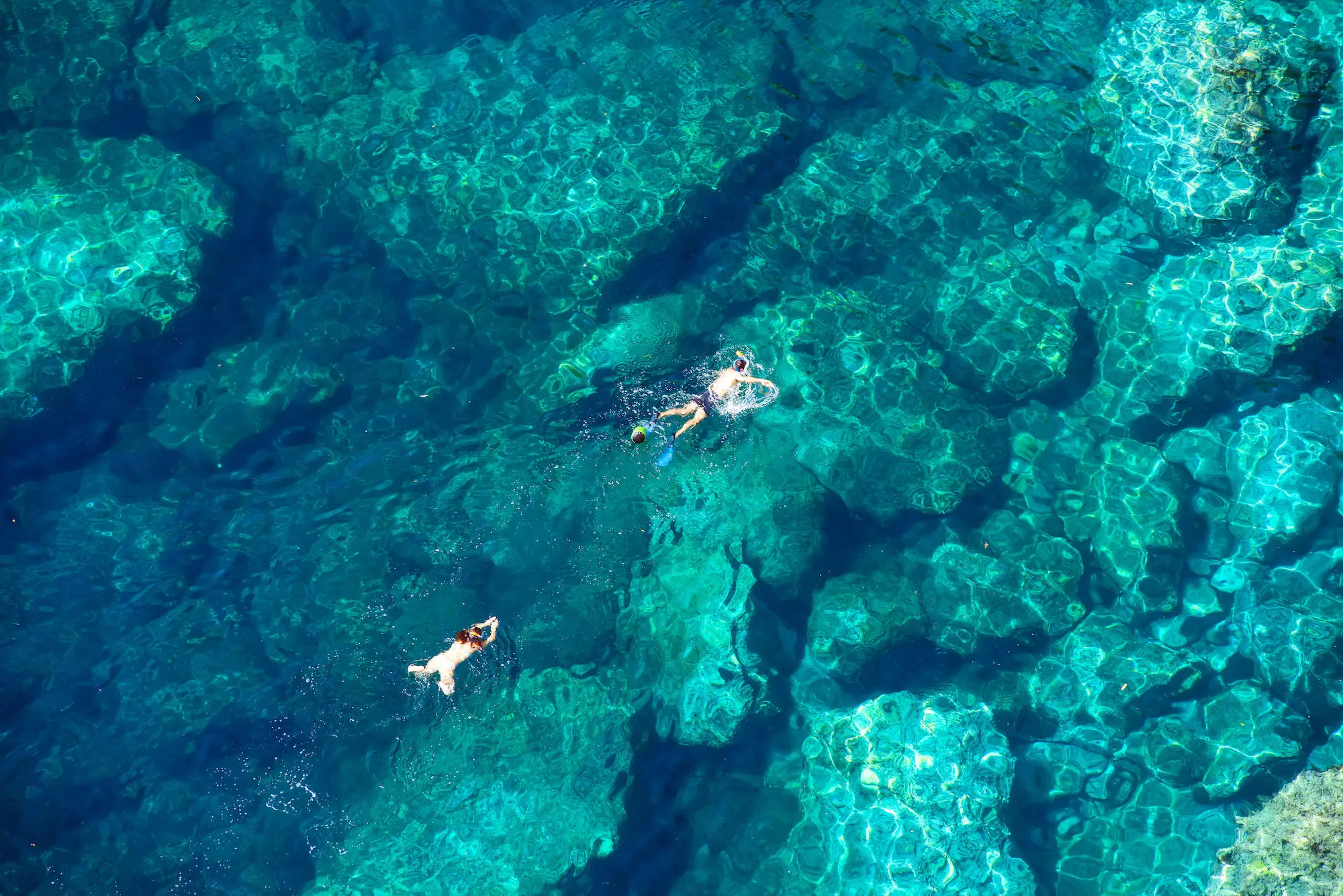
10 Best Beaches in Occidental Mindoro Philippines: White Sand Beach Resorts
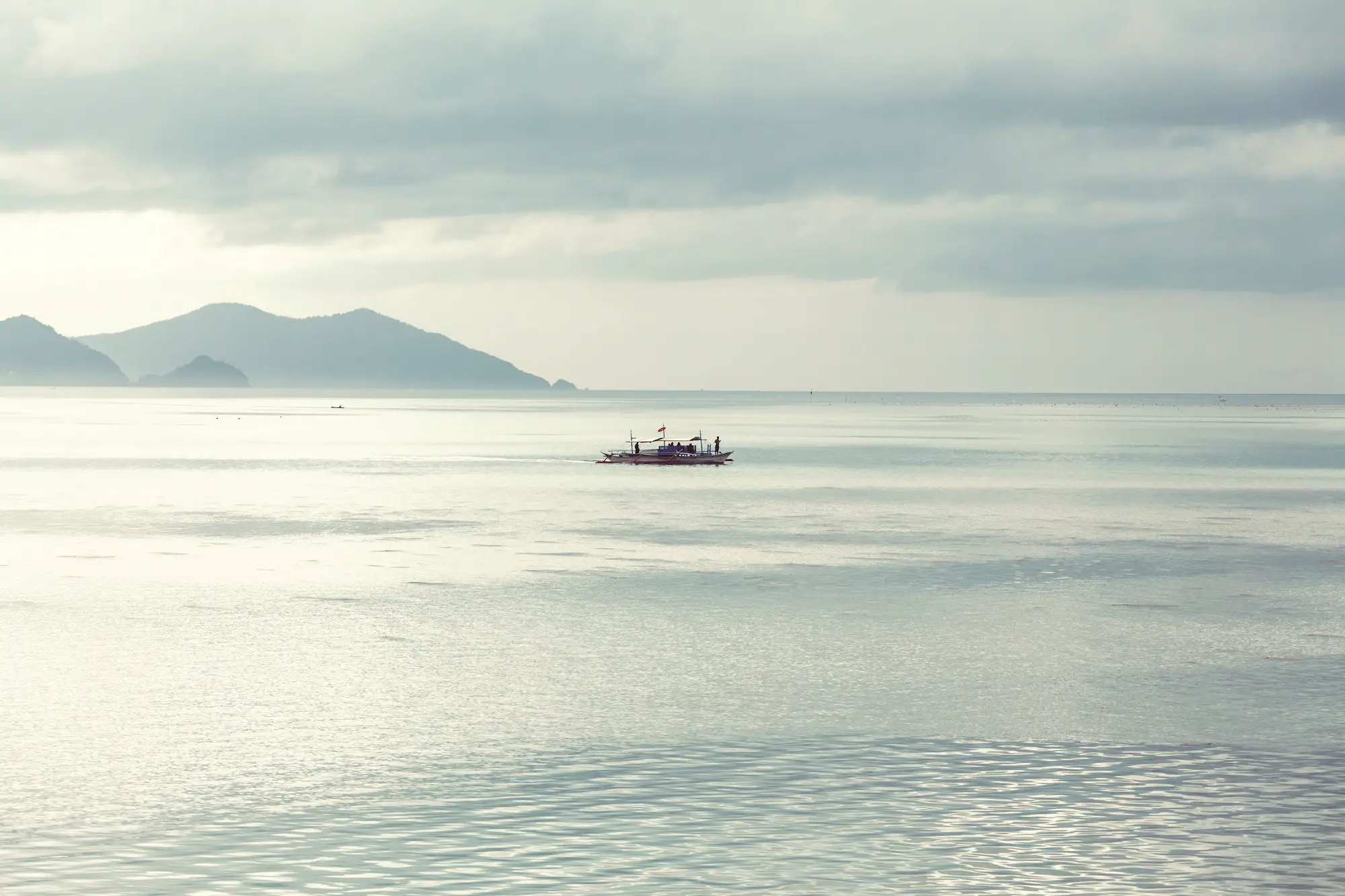
10 Best Beaches in Samar Philippines ( White Sand Beach Resort )
Leave a comment cancel reply.
Your email address will not be published. Required fields are marked *
Save my name, email, and website in this browser for the next time I comment.
Guide to Philippine Outdoor Destinations
Discover Philippine Travel Destinations, Local Bloggers, and Storytellers
Tumuyoc Falls - Pasil, Kalinga
Tumuyoc falls of kalinga, things to do.
- Enjoy the hike while taking in the amazing view.
- Take a refreshing dip at Tumuyoc Falls.
- Stay for a night with the locals and experience their simple way fo life
- Know the tradition of the hand - tapped tattooing
- Be adventurous and topload on your way down
- White water rafting on Chico River
More Info on Tumuyoc Falls
- Location/Jump-off Point: Pasil, Kalinga
- Trekking Time: 3-4 hours
- Guide Fee: Donation
- Entrance Fee: None
More Pictures of Tumuyoc Falls
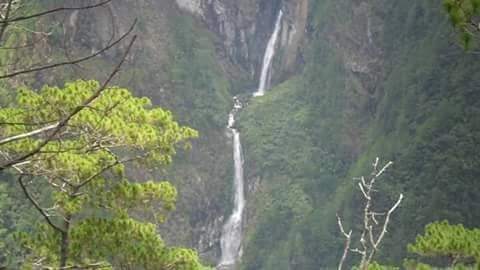
Videos of Tumuyoc Falls Trekking Adventure

- TRAVEL GUIDES
- DESTINATIONS
- ADVENTURE TRIPS
- HOTELS & RESORTS
- FIND HOTELS WITH DISCOUNTED RATES!
ads_banners
Kalinga tourist spots: the charm of the sleeping beauty.

FOLLOW MY ADVENTURES ON YOUTUBE @PinoyAdventurista
7 comments :.

wow ang ganda, tapos ung clouds ang baba.
ang galing sobra! :)
ngayon ko lang nalaman na may ganyan palang mountain. Astig Sleeping Beauty! Parang Mariang Makiling din. Will definitely check that out pag nagawi ako ng Kalinga! :)

This part of the country is included on my To-Visit destination. Thank you for sharing valuable information. I think it is also amazing to do a trek in on this "sleeping beauty mountain." Anyway would you happen to know if there are local trek guides there? Thanks.
I am not a mountain person but I can appreciate the beauty of one. I bet the altitude here is pretty high na!
Yey, I'm from Kalinga. Nakakaproud lang na other people appreciate Kalinga's beauty! :)
Thank you for visiting Kalinga! I am from Kalinga and it's overwhelming to see other people like it here. :)
Looking for Budget Travel Guide Blogs, Hotel Reviews, and Sample DIY Itineraries? Welcome to Pinoy Adventurista, "Your Next Ultimate Adventure Starts Here!" Pinoy Adventurista is one of the Top Travel Blogs in the Philippines and the World. In 2013, he visited all the 81 provinces in the Philippines.
Kalinga Travel Tips

Kalinga Travel Blog

Money-saving tip : Use promo code “ KLOOKDETOURISTA ” to grab 5% OFF hotels and 3% OFF tours/activities next time you book on Klook.
Book here Hotels Airport Transfers Insurance Internet
Scroll down for more travel tips, guides & blogs. Follow Detourista on:
Facebook Instagram Tiktok Pinterest
Kalinga Travel Guide
Kalinga is a province within the Cordillera Administrative Region in the Philippines. It is famous for its rich cultural heritage and tribal awareness. It also has a range of attractions, from rice terraces to whitewater rapids, waterfalls, and mountain ranges.
Apo Whang-od is probably the most famous Kalinga resident. People flock to the province and have a hand-tapped tattoo from her. Aside from getting inked, visitors also come to experience Pasil Natural Dam, Binasalan Falls, Mt. Mating-oy, Buaya Cave, and Lubo and Mangali Rice Terraces. Sulfur Hills is particularly splendid with its surreal site and challenging trek. This attraction lies at the lower slopes of Mt. Binuluan and a trek to reach it would require hours of passing through mossy forests and tall pine trees.
From Kalinga, you can easily access other destinations in Cordillera, including Baguio City, Sagada, Ifugao, and Apayao.
Start here: 2024 Best Travel eSIM , Best Travel Apps .
Kalinga Essentials
How much does it cost to visit Kalinga ? Click below to compare rates and discounts online:
Where to stay in Kalinga
Click below to search recommended Kalinga hotels/hostels/home rentals within your budget. Book online with these trusted booking sites for rock-bottom prices & convenient bookings.
Pro tip : Remember to set your minimum/maximum price, travel dates, and sort by review ratings. Book sooner rather than later if you already have your dates set. Cheaper-priced rooms and hotels with high reviews tend to get fully booked faster, especially during busy days like weekends, holidays & peak tourist seasons.
Kalinga Flights
Find cheap flights by comparing multiple airlines with these airfare comparison & booking sites:
See more before you go
- Mountain Province
- Southeast Asia
- Philippines

See more guide blogs

Where To Next?

Where are you going?
Kalinga Updates


IMAGES
VIDEO
COMMENTS
Discover the hidden wonders of Kalinga province, a land of legend, mystery, and beauty. Explore its waterfalls, caves, mountains, rice terraces, and more with this comprehensive list of tourist spots.
Kalinga tourist spots worth the drive 1. Chico River Image credit: David Stanley For adrenaline junkies hunting down the most thrilling Kalinga tourist spots, the Chico River is a must-visit. It weaves through the Cordillera and Cagayan Valley regions, flanked by lush forests, majestic gorges, and exhilarating rapids. Additionally, the Chico River holds immense cultural significance ...
Here are the top 20 Kalinga tourist attractions and activities that you should consider visiting. 1. Chico River. Embark on a thrilling white-water rafting adventure along the Chico River, one of the longest and most challenging rivers in the country. With its stunning scenery, thrilling rapids, and expert guides, this is an adrenaline-pumping ...
3. Kalinga Capitol Tourism Complex. The Kalinga Capitol Tourism Complex is a sprawling park located in the capital city of Tabuk, Kalinga, Philippines. It is a popular tourist destination that features a variety of attractions, including a museum, a botanical garden, a zoo, and a children's playground.
Kalinga is a landlocked province in the Cordillera Region's northernmost region. It is bounded to the north by Cagayan and Apayao, to the south by Mt. Province, and the west by Abra. The provinces of Cagayan and Isabela are located to the east. Tabuk is the capital town. The name of the province comes from the Ibanag and Gaddang noun ...
Email: [email protected]. Joyce B. Calpito Tourism Staff Mobile: 0927-418-1220 Email: [email protected] Facebook Page: Province of Kalinga. Kalinga Travel Guide Frequently Asked Questions What are some popular tourist spots in Balbalan, Kalinga? Balbalan is a municipality in the province of Kalinga that is known for its scenic ...
Things to Do in Kalinga Province. 1. Tinglayan Rice Terraces. It is more interesting to stay in the top of the jeepney to see the real beauty of it. It is worth to stay here if... 2. Palan-ah Falls. The village is nice but the views are exceptional. You look right at the Sleeping Beauty Mountain Range.
The easiest way to reach Kalinga and see Whang Od. If you prefer to travel via Tabuk, Kalinga, the Victory Liner bus schedule is listed below. The fare is Php800+ for a regular aircon and more than Php1,000 for a first class bus. Kamias to Tabuk bus schedule: Daily at 7:00 PM and 8:30 PM. Sampaloc to Tabuk bus schedule: Daily 9:45 PM.
Your Ultimate Travel Guide to Kalinga Province. Kalinga, a province within the Cordillera Administrative Region of the Philippines, is a hidden gem waiting to be explored. Known for its wealthy culture and breathtaking scenery, Kalinga has turn out to be a preferred destination for travelers in search of an off-the-beaten-path experience.
Tabuk City makes a great trip for traditional culture & indigenous cuisine. But don't look for it in glitzy restaurants because honestly, there's none. Dishing down authentic food comes normal in any Kalinga household. The common stars of the kitchen are "binungor" (mixed beans-shellfish combo in coco milk) and "sinursur" or catfish ...
Nestled in the rugged Cordillera Mountains, Kalinga Province is a treasure trove of awe-inspiring natural tourist spots and rich indigenous culture. From the mystic mountains and the great Chico River to ancient rice terraces and traditional tattoo artistry, Kalinga offers a true adventure.Discover the enchanting Kalinga Province and explore its vibrant culture, stunning landscapes, and rich ...
TOURIST ATTRACTIONS HISTORICAL Aguinaldo Hill It is located at Barangay Asibanglan-Pinukpuk Road at Allaguia junction. Gen. Aguinaldo used this hill as a common post during the Philippine-American war. CULTURAL Mini-Museum of Kalinga A mini-museum was initiated and established by the Kalinga Special Development Authority situated in their ...
Immerse yourself in the rich culture and history of Tinglayan Village in Kalinga. Explore the village's tourist spots and witness the traditional practices of its indigenous tribes. Admire the breathtaking landscapes, including rice terraces and rivers, that make Tinglayan Village a hidden gem in Kalinga. Experience the warm hospitality of ...
2. Tuga Catholic Church. The Tuga Catholic Church, also known as St. Joseph the Worker Parish Church, is a simple church located in the barangay of Tuga, Tabuk City, Kalinga province, in the Cordillera region of the Philippines. It is dedicated to Saint Joseph the Worker, the patron saint of farmers, fishermen, and other laborers.
15 places sorted by traveller favourites. 1. Tinglayan Rice Terraces. It is more interesting to stay in the top of the jeepney to see the real beauty of it. It is worth to stay here if... 2. Palan-ah Falls. The village is nice but the views are exceptional. You look right at the Sleeping Beauty Mountain Range.
Kalinga traditional dance is a celebration of the community's culture, identity, and way of life, and it has remained a vital part of their traditions to this day. The Kalinga traditional dance is performed during various occasions such as weddings, funerals, and other significant events in the community. The dance is a group performance ...
Nearby Tourist Spots Kalinga Chico River. Kalinga is not just about tattoos. It's a region rich in culture and natural beauty. Nearby attractions include the Chico River, perfect for whitewater rafting; the historic Banaue Rice Terraces; and the hot springs of Tinglayan. Each offers a unique glimpse into the natural and cultural heritage of ...
These destinations beckon explorers to delve further into the Kalinga province's treasures, creating a well-rounded journey through this captivating region. Banaue and the Banaue Rice Terraces : Venture south of Tabuk City to visit the world-famous Banaue Rice Terraces, a UNESCO World Heritage Site and a testament to the ingenious engineering ...
It is located in Balbalan, Kalinga. 5. Lubo and Mangali Rice Terraces. Lubo and Mangali Rice Terraces - is a wonderful tourist spots in Kalinga Apayao Philippines. It looks like a roundabout waterfalls that surrounds the village of Lubo. You will pass the Tanudan river beside the terraces.
Things to Do in Kalinga Province, Philippines: See Tripadvisor's 108 traveler reviews and photos of Kalinga Province tourist attractions. Find what to do today, this weekend, or in April. We have reviews of the best places to see in Kalinga Province. Visit top-rated & must-see attractions.
Tumuyoc Falls of Kalinga. Tumuyoc Falls is located in Pasil, Kalinga; needs to hike four hours from the nearest community. But, then again, nature's surprises will greet you all along. It measures around 30 feet high and cascades to a wide and very deep pool. The water is icy-cold and crystal clear. The pristine water also hosts endemic marine ...
Tomas). From Banaue, take a jeepney bound for Bontoc, travel time is about 3 hours and fare is around 200 pesos. At Bontoc, take a bus bound for Tabuk that passes by the town of Tinglayan. The bus leaves at 9:00 AM and their terminal is found near Mountain Province State Polytechnic College. Travel time is around 2.5 to 3 hours, fare is 110 pesos.
Kalinga Travel Guide. Kalinga is a province within the Cordillera Administrative Region in the Philippines. It is famous for its rich cultural heritage and tribal awareness. It also has a range of attractions, from rice terraces to whitewater rapids, waterfalls, and mountain ranges. Apo Whang-od is probably the most famous Kalinga resident.